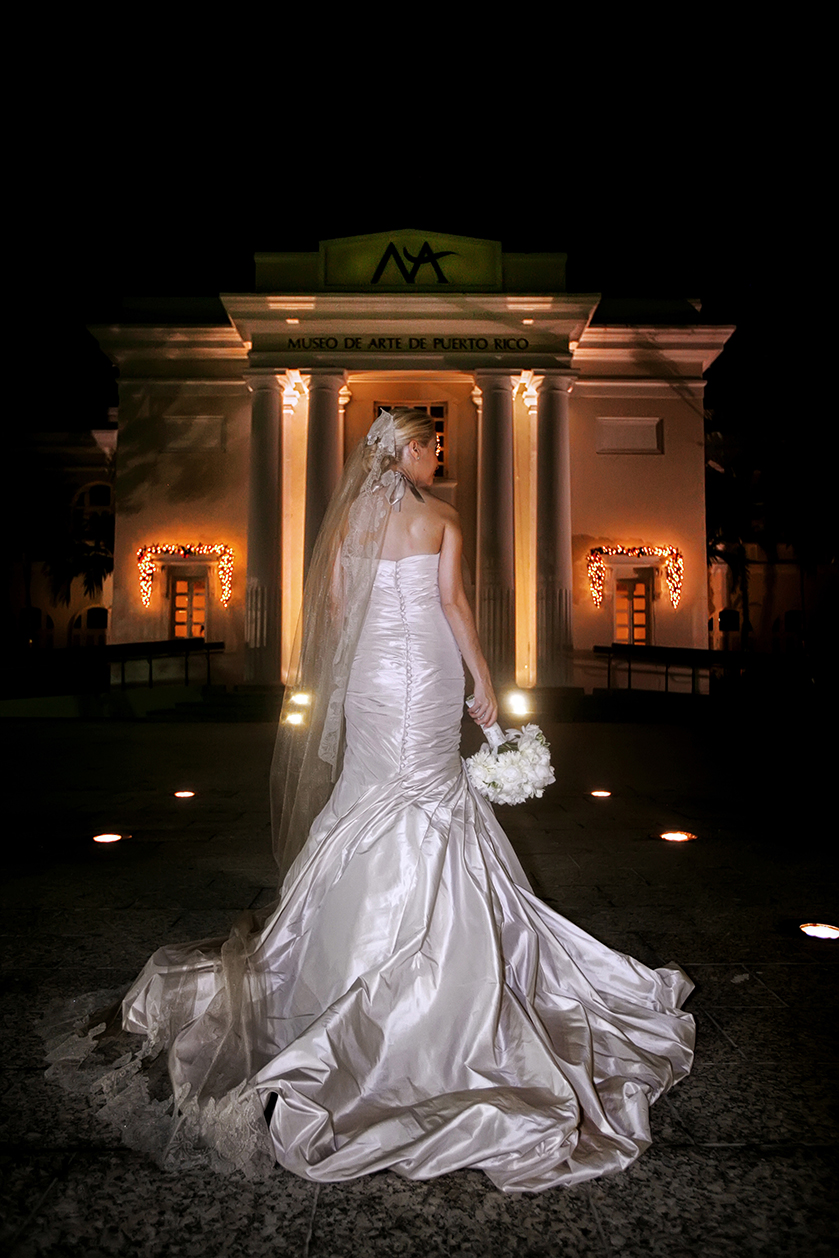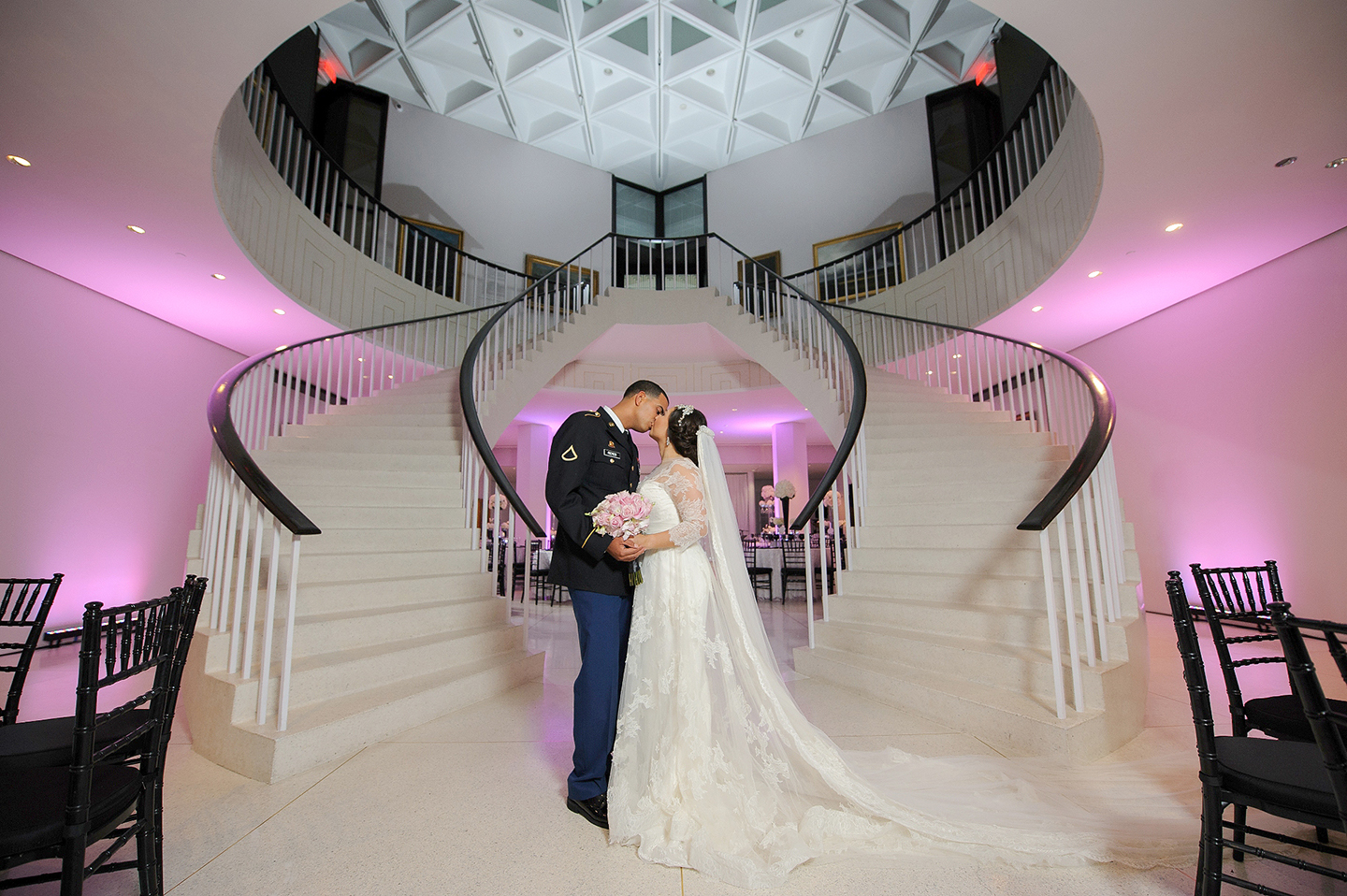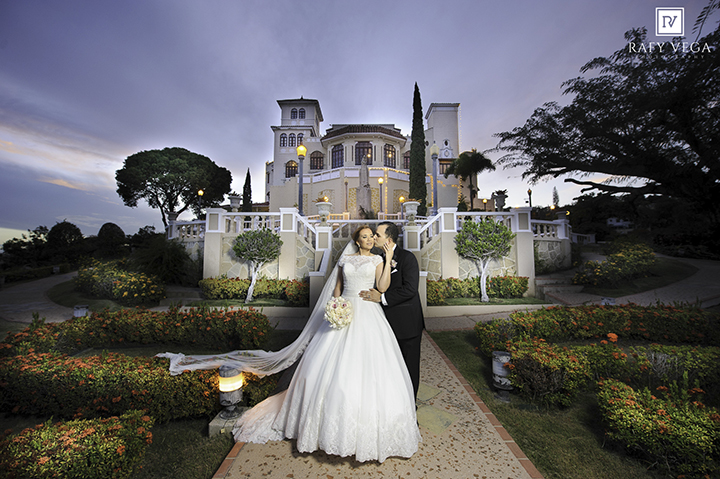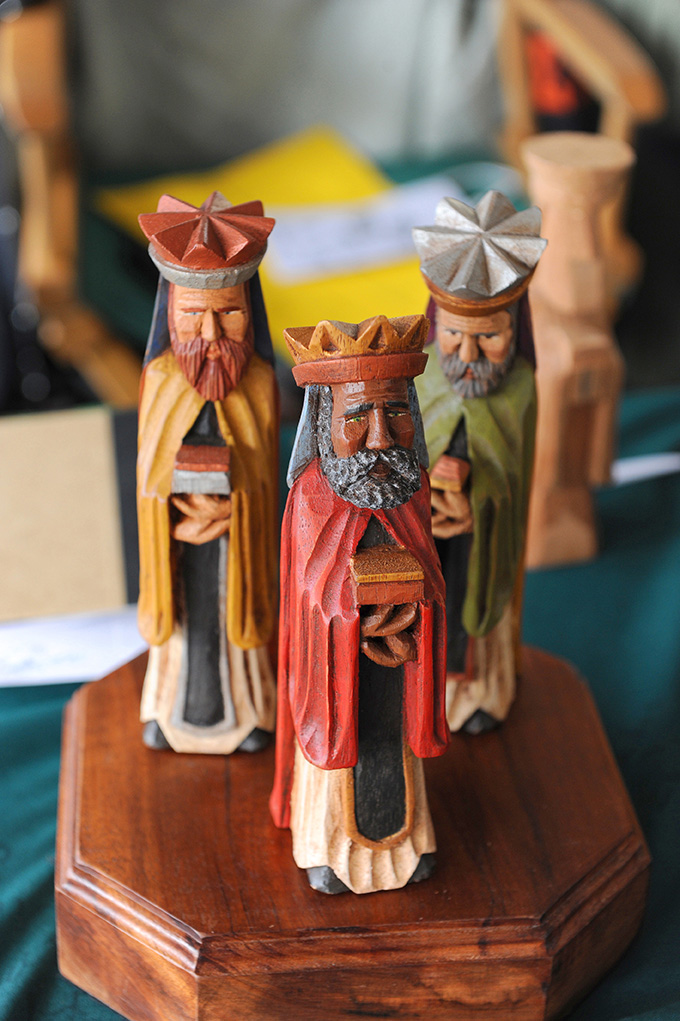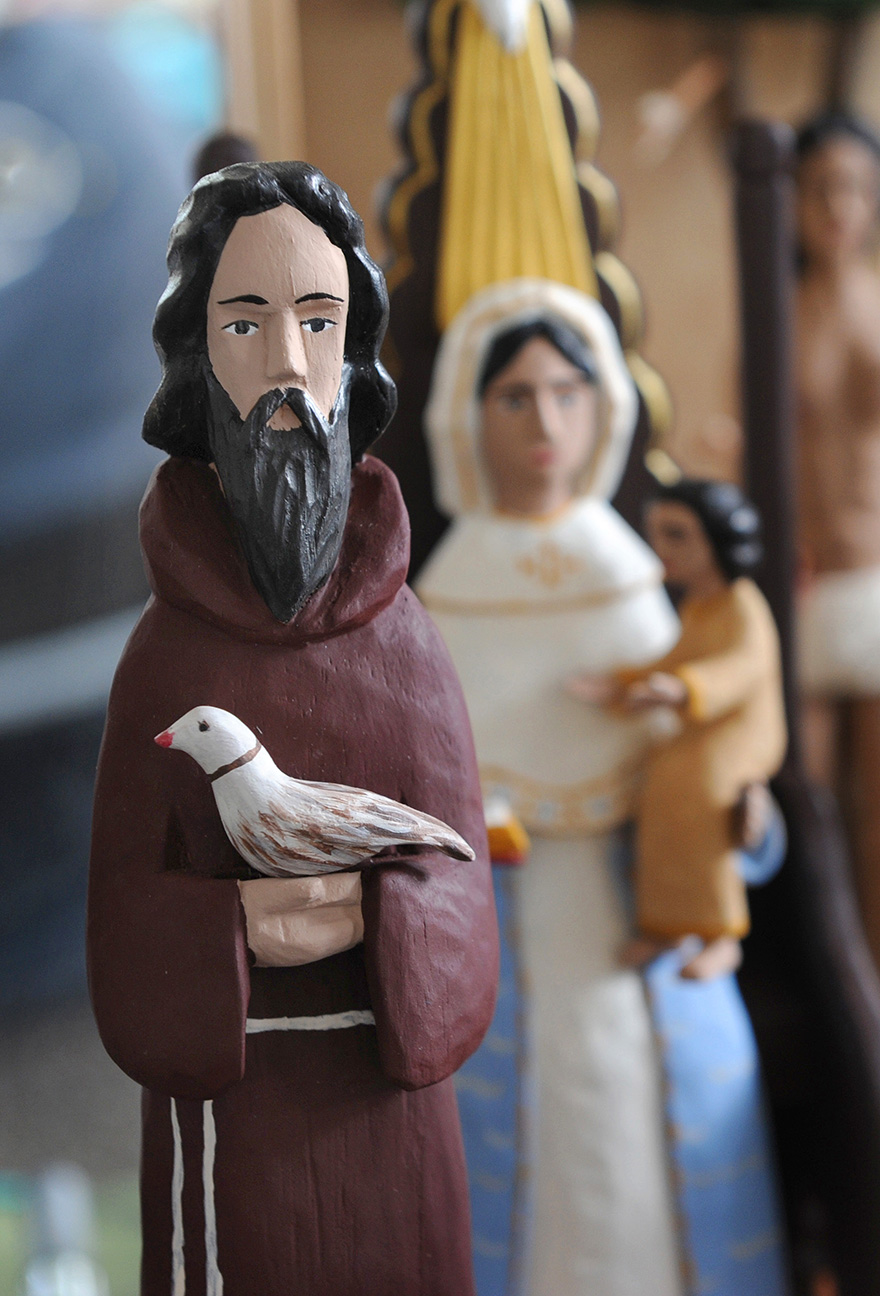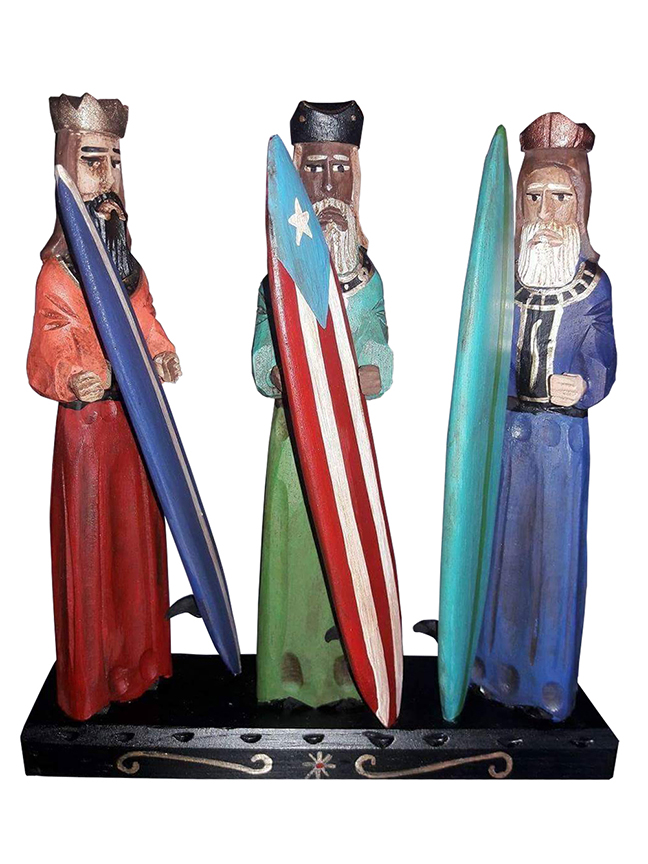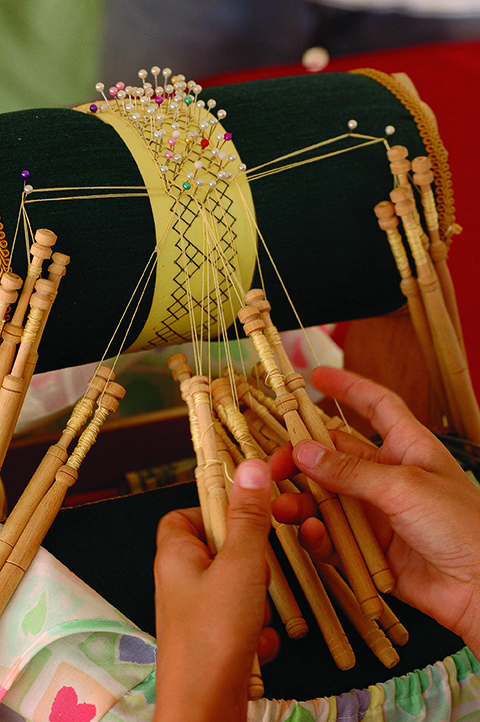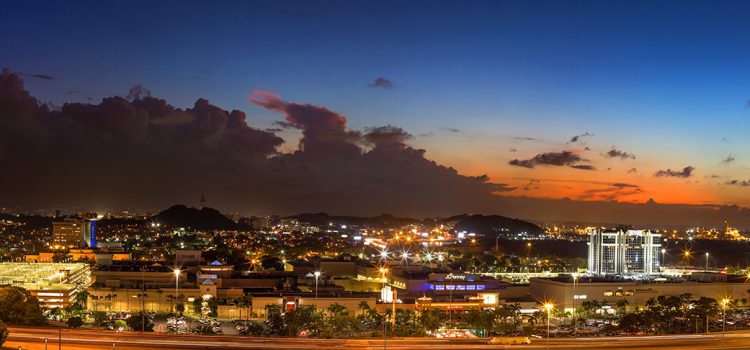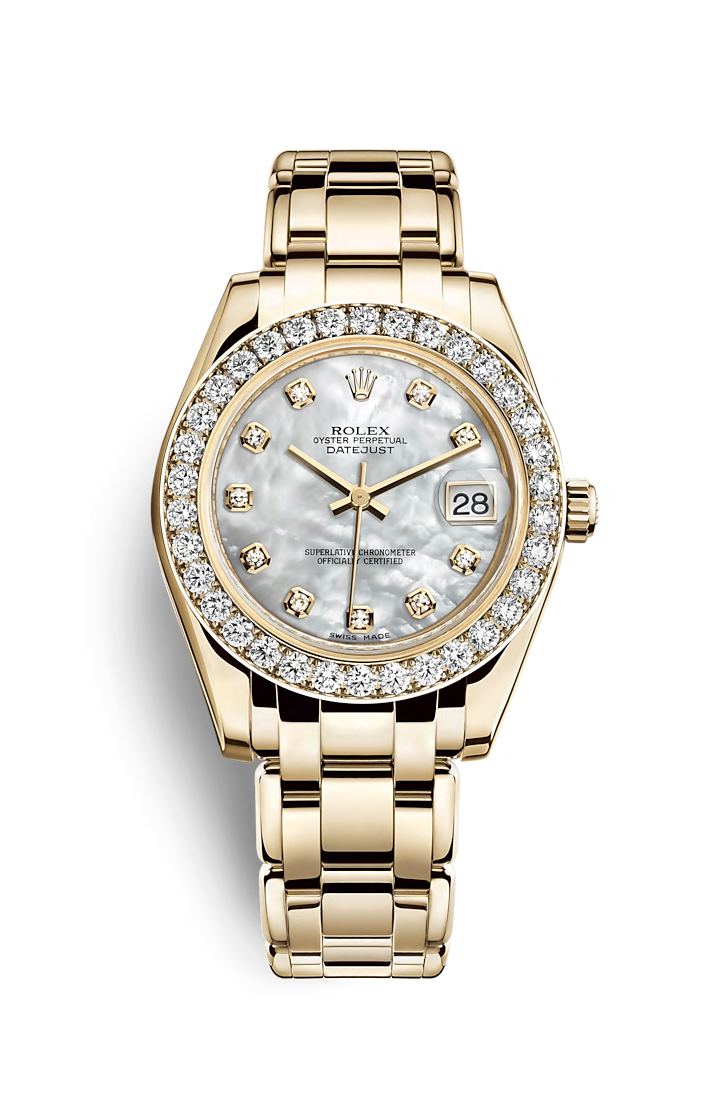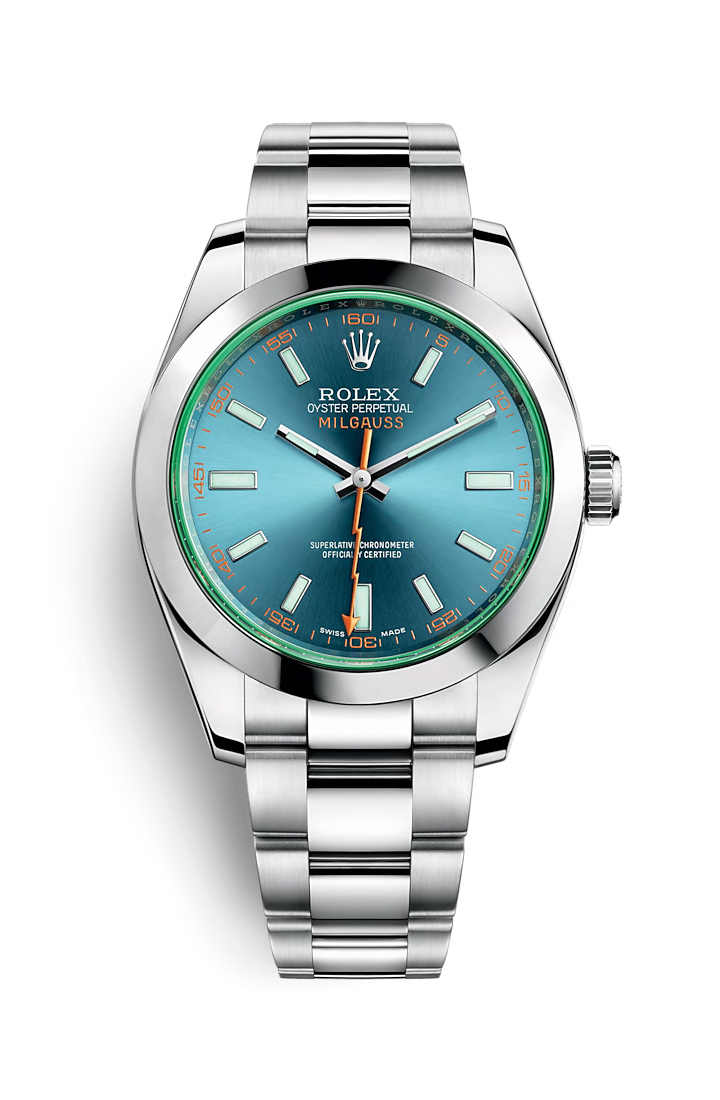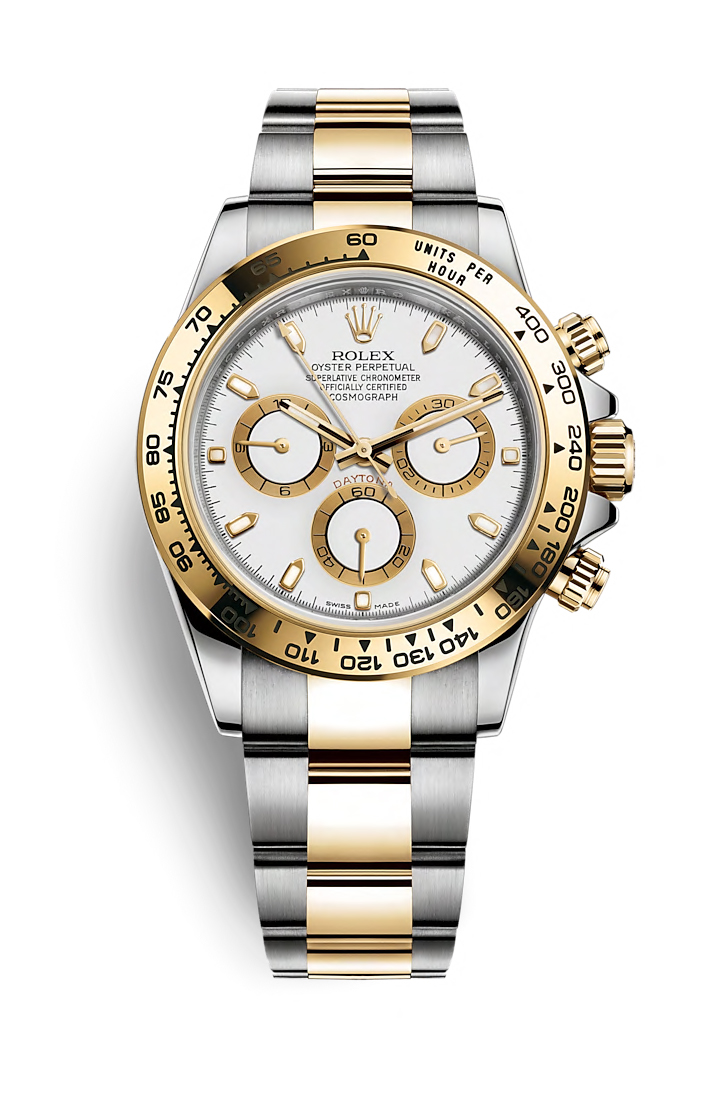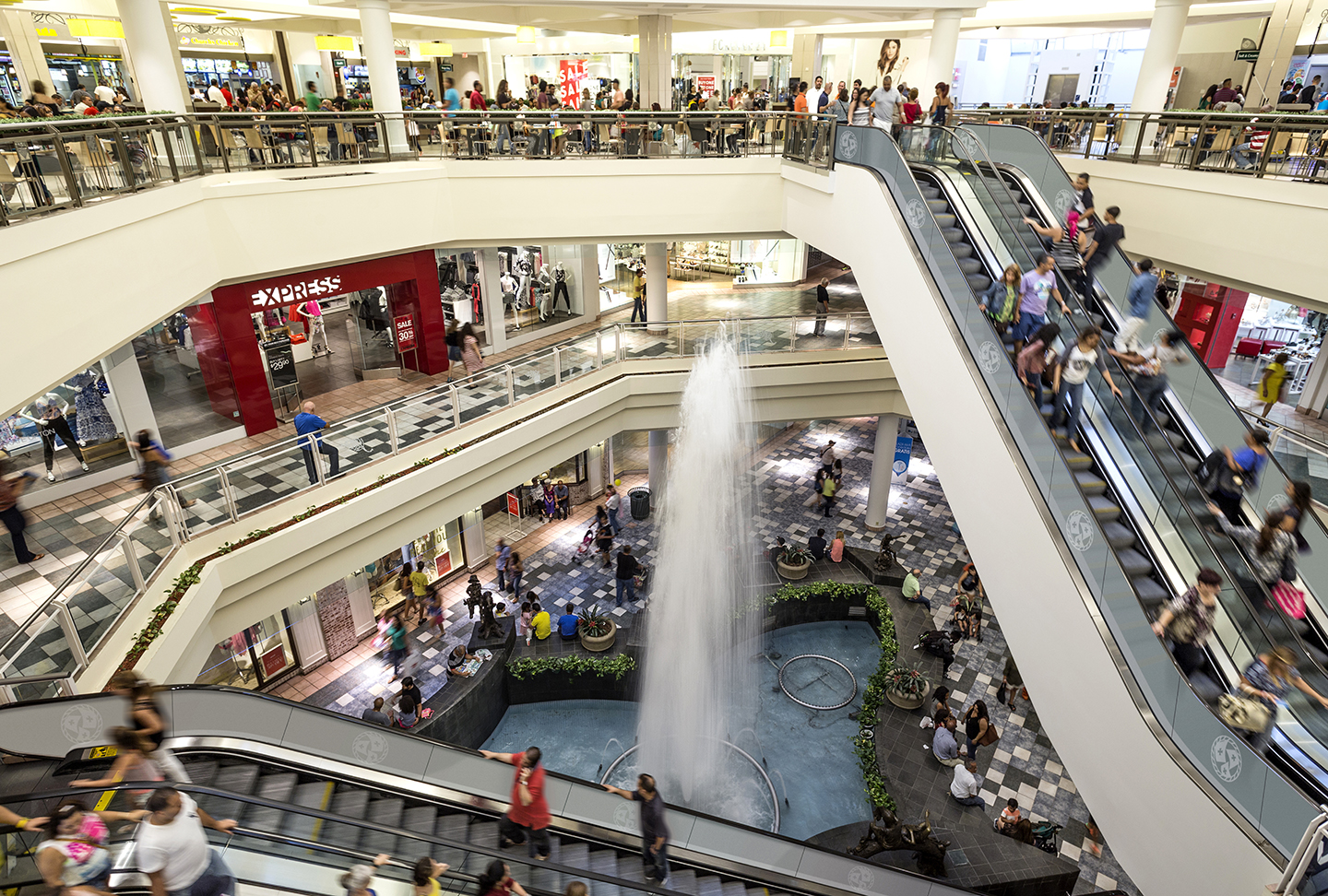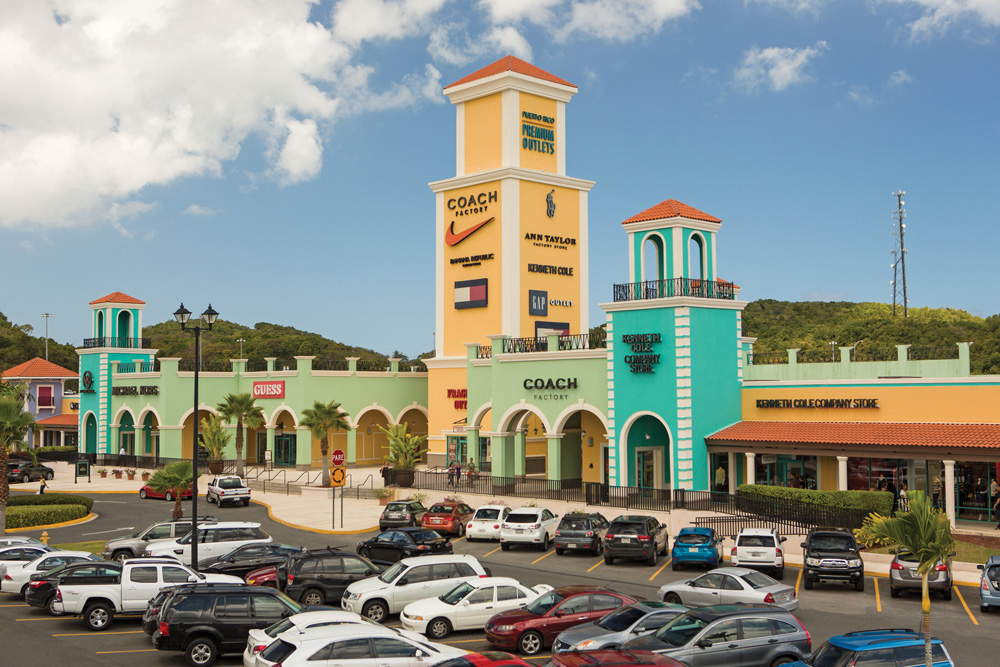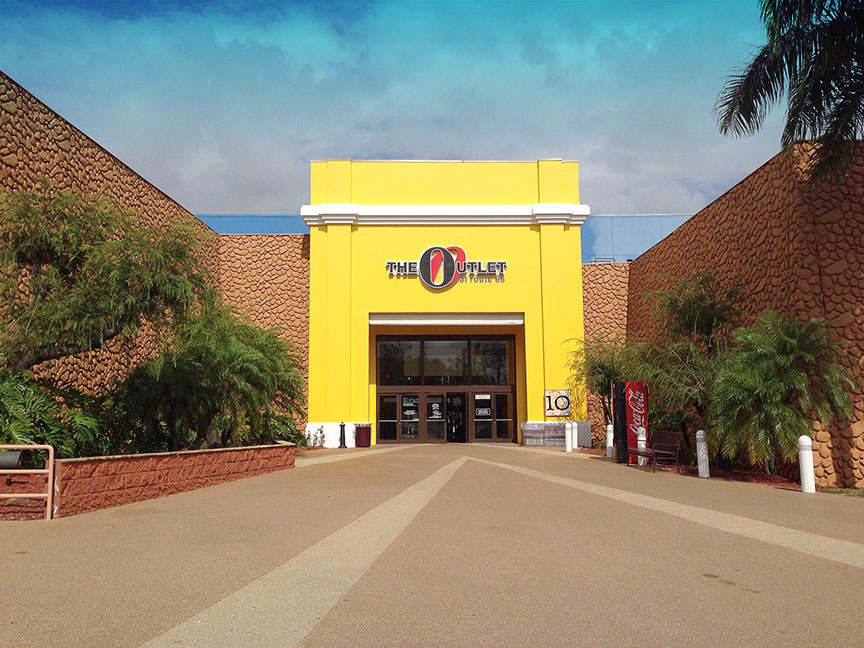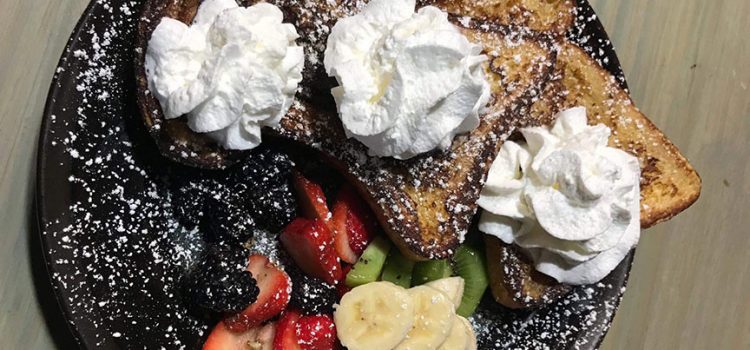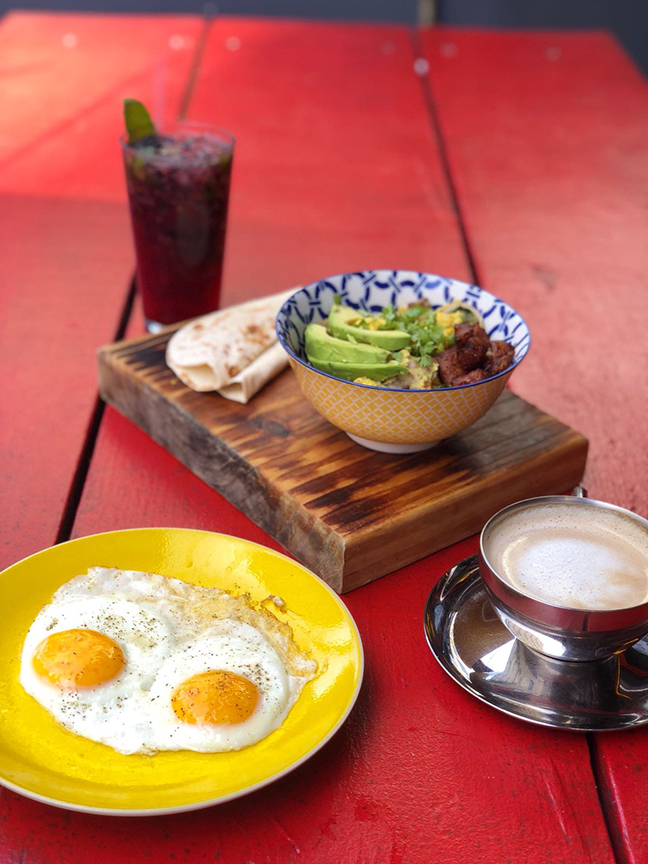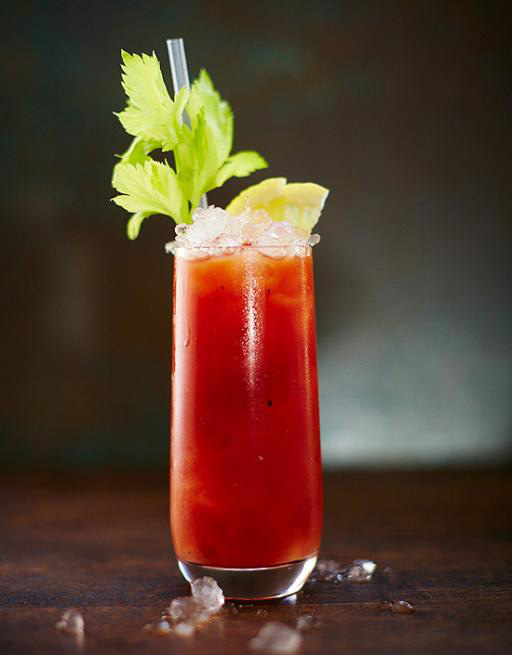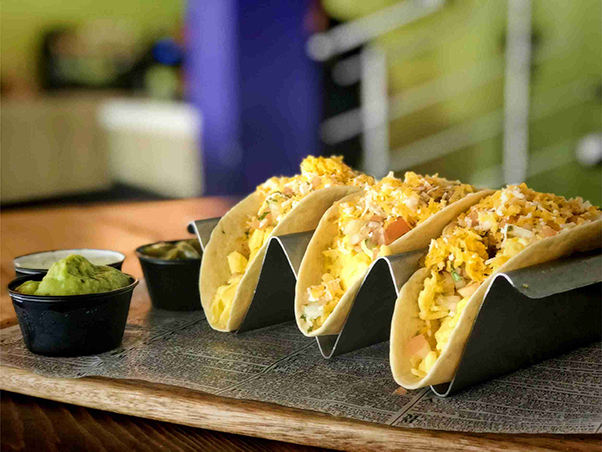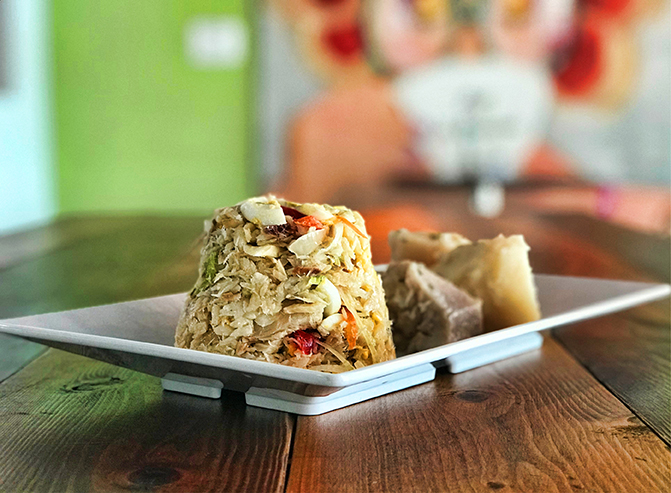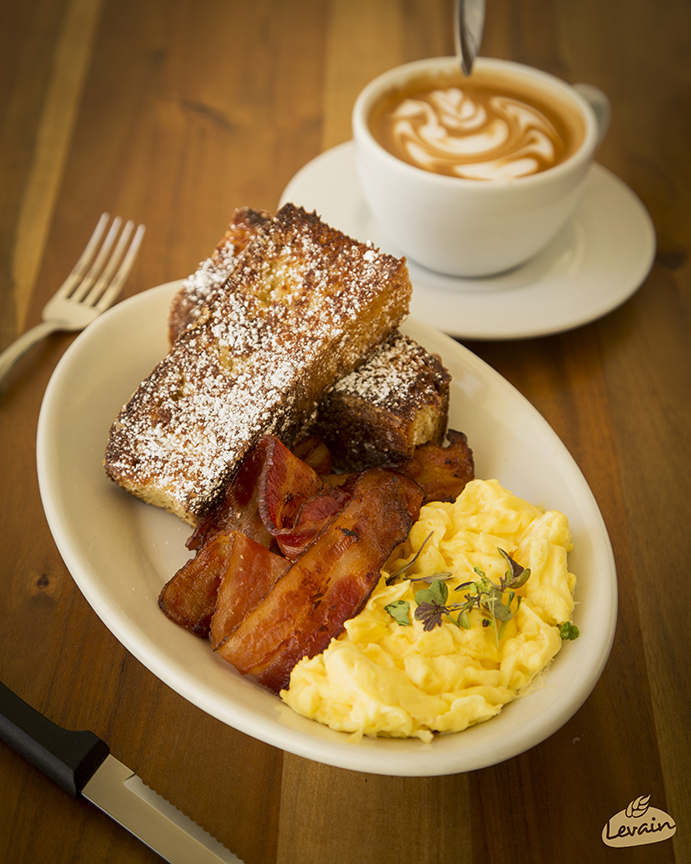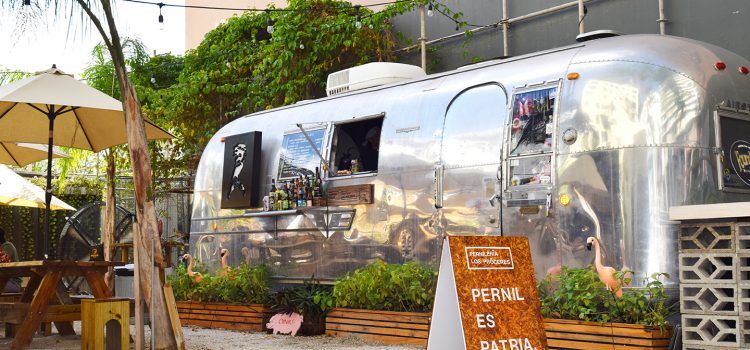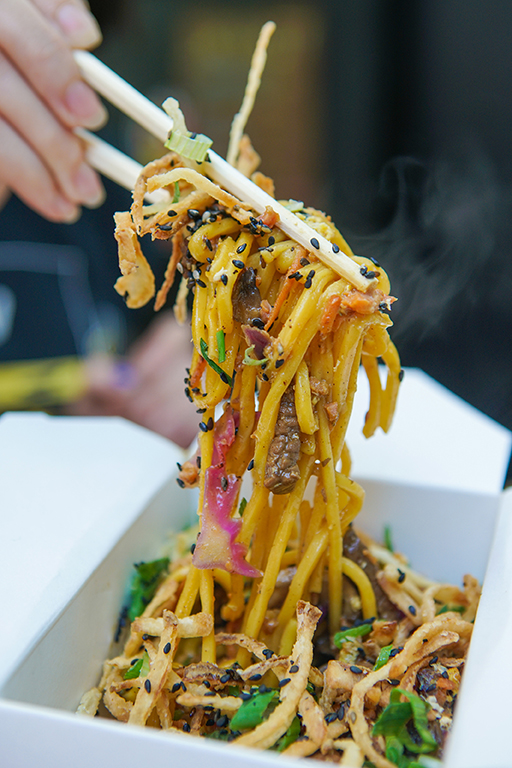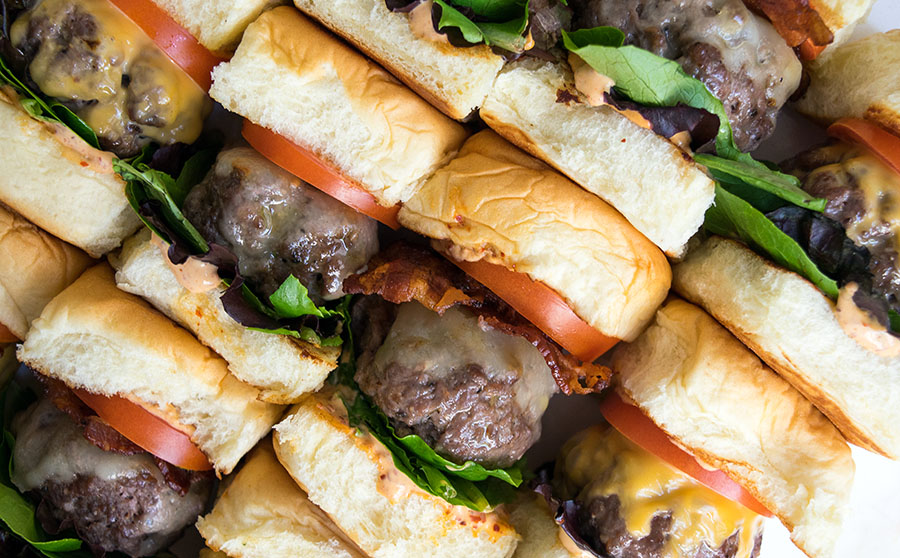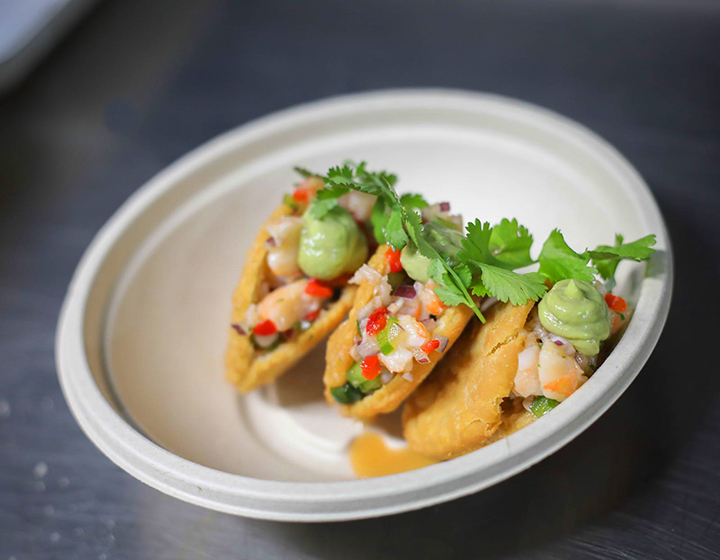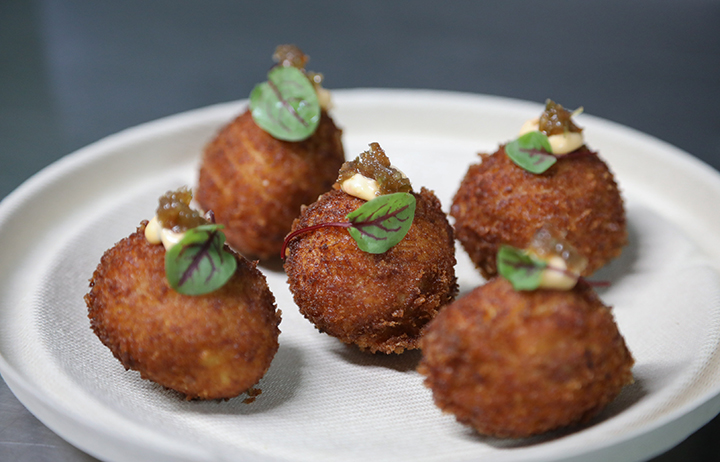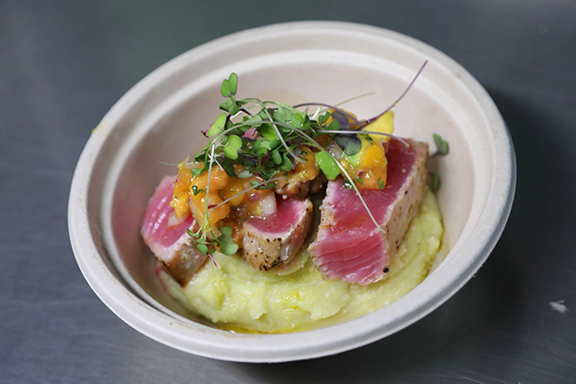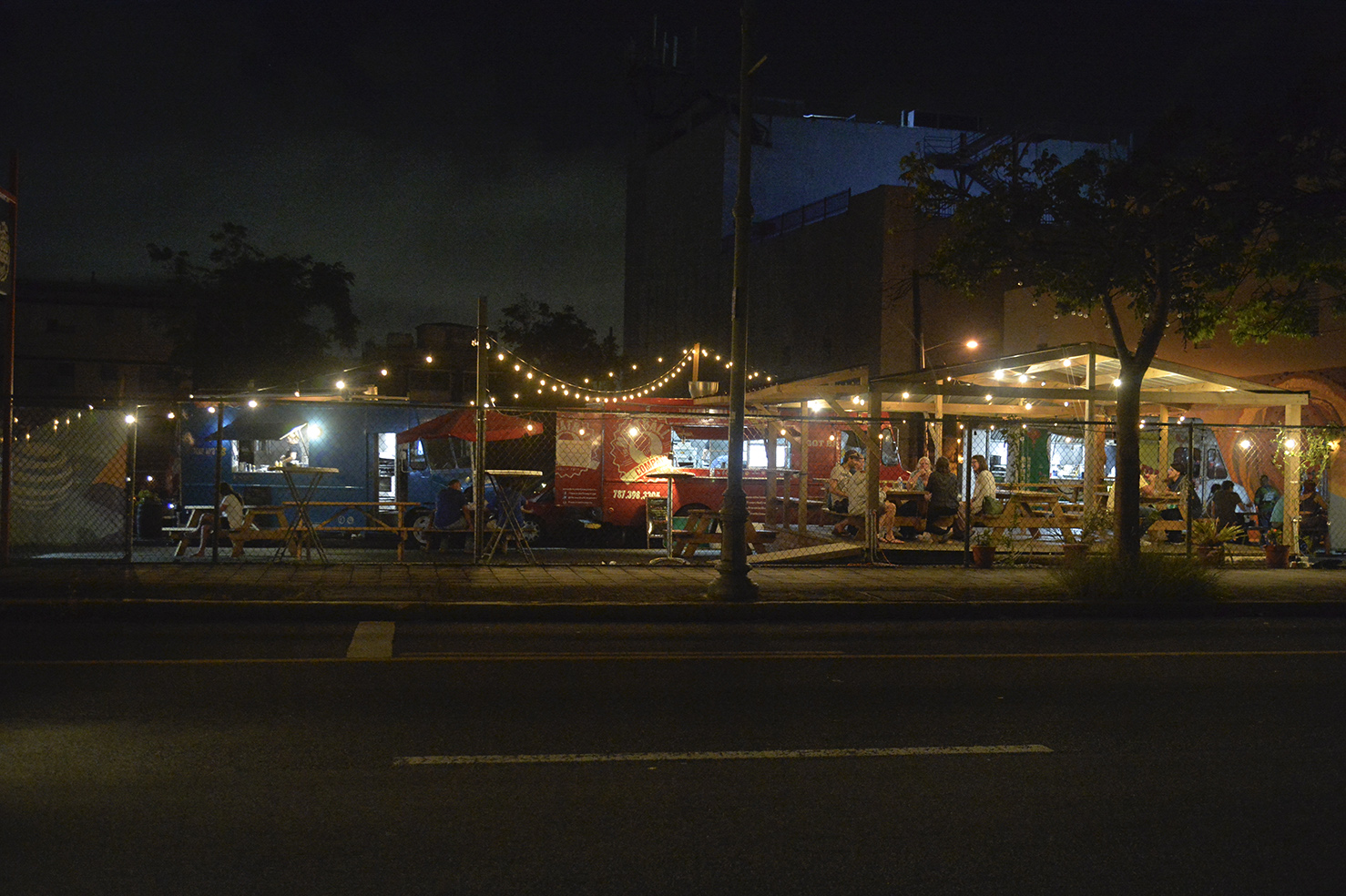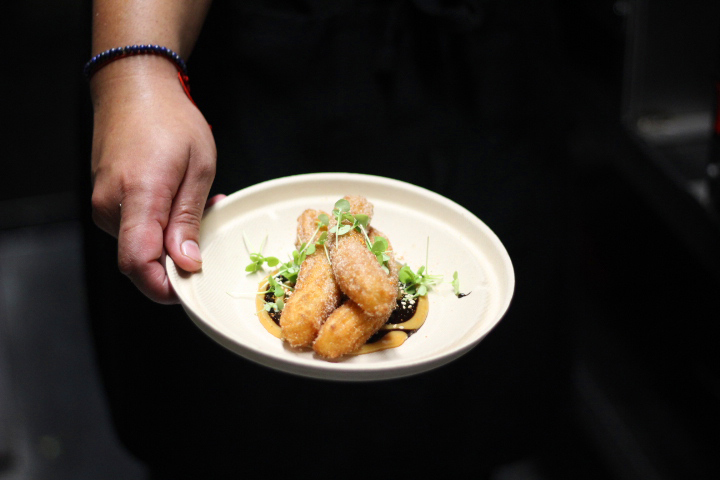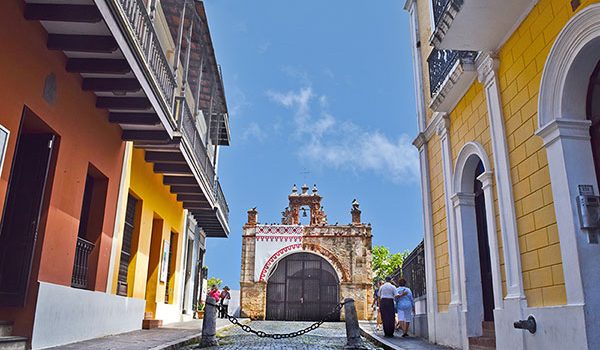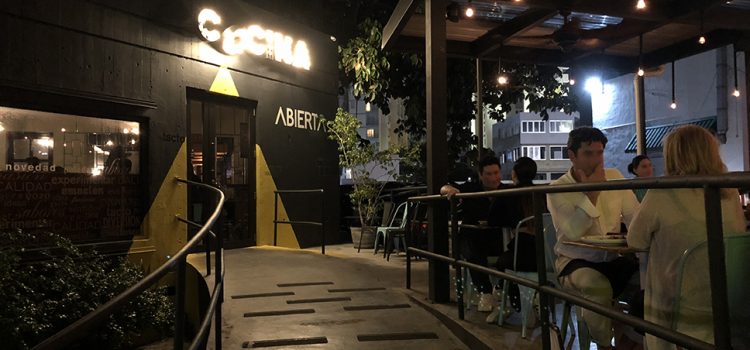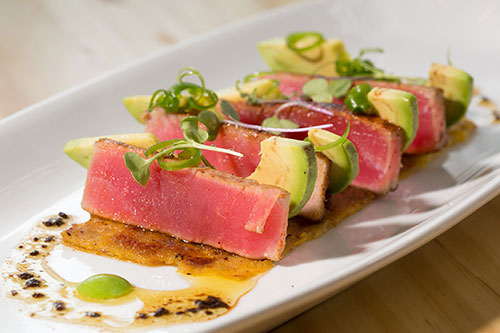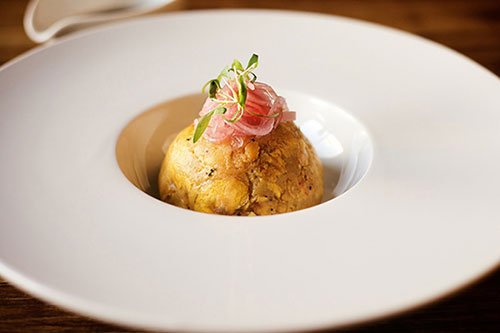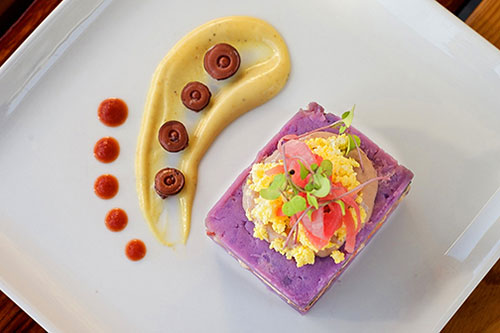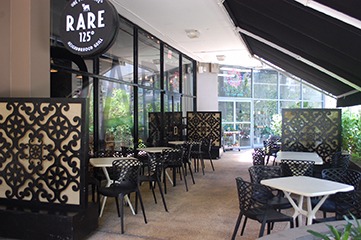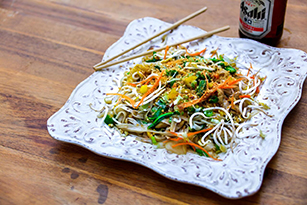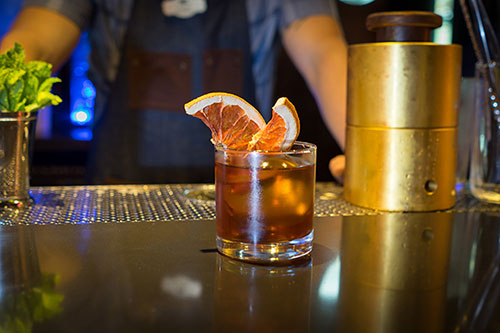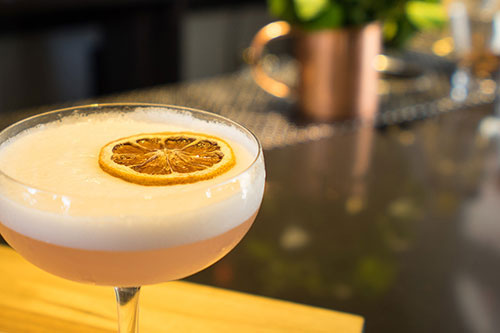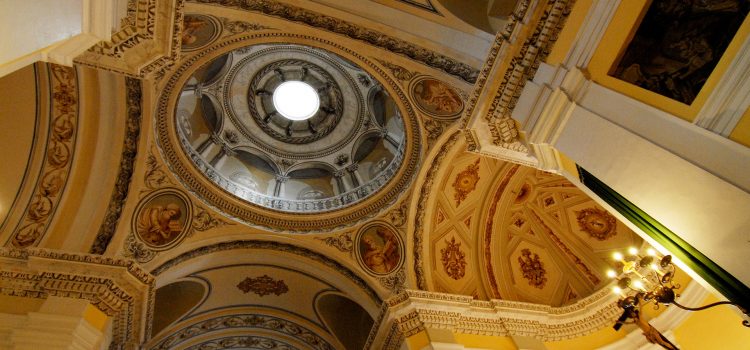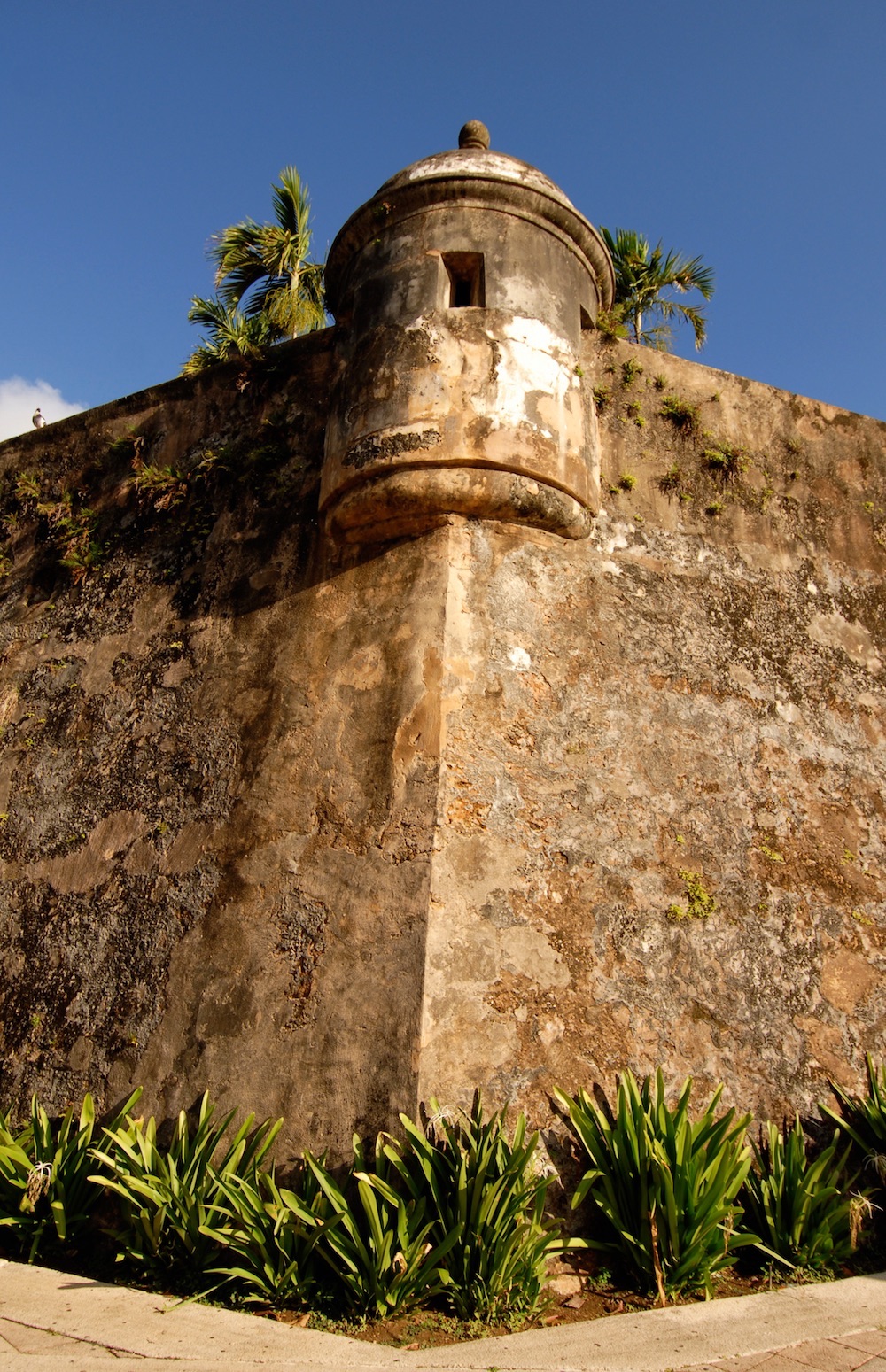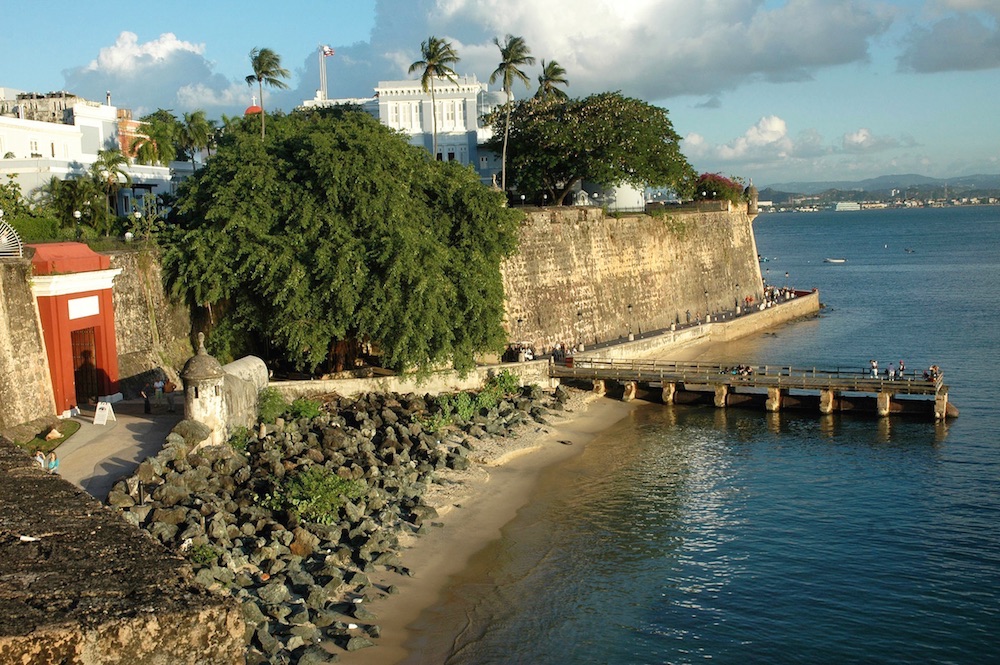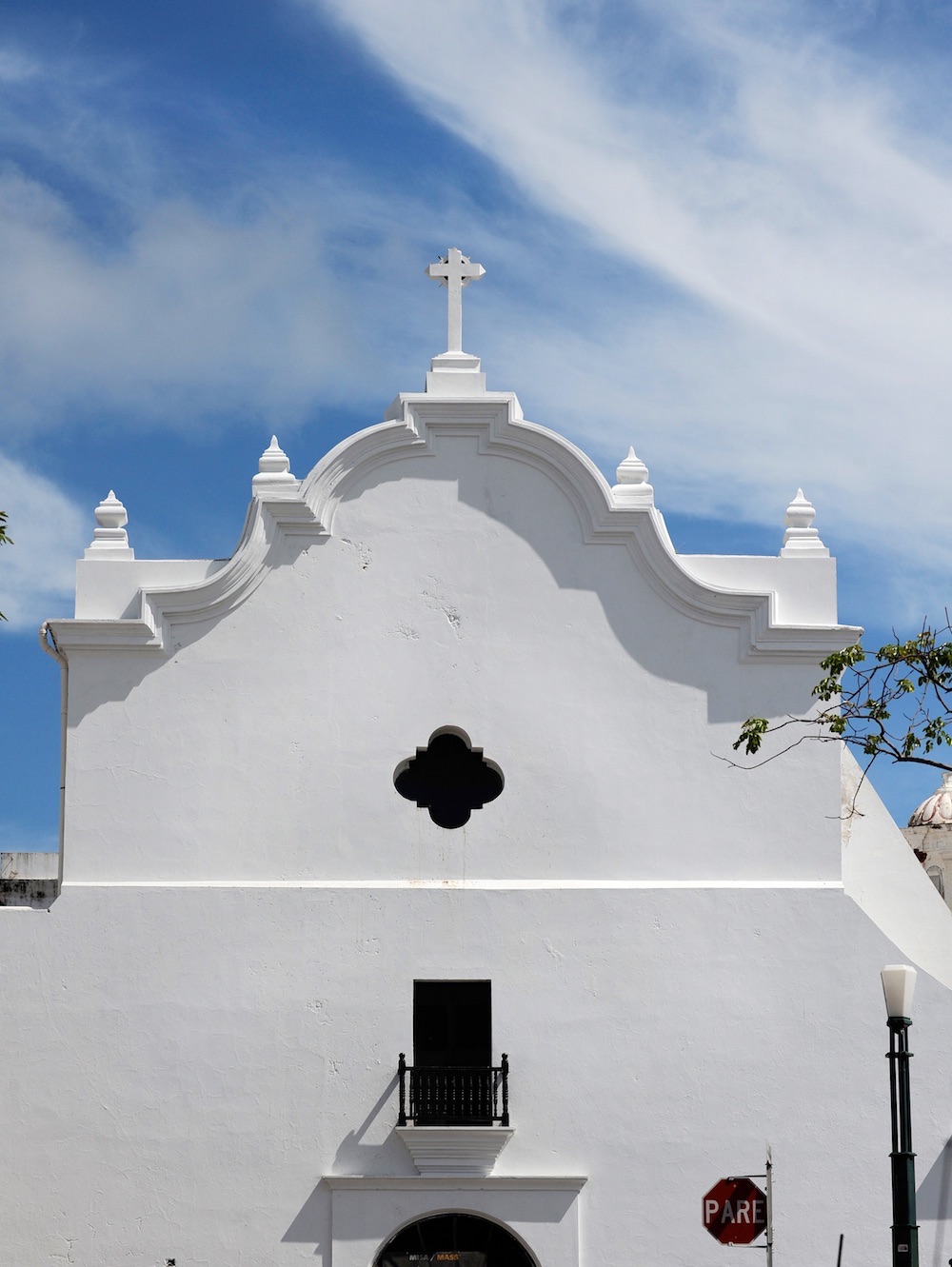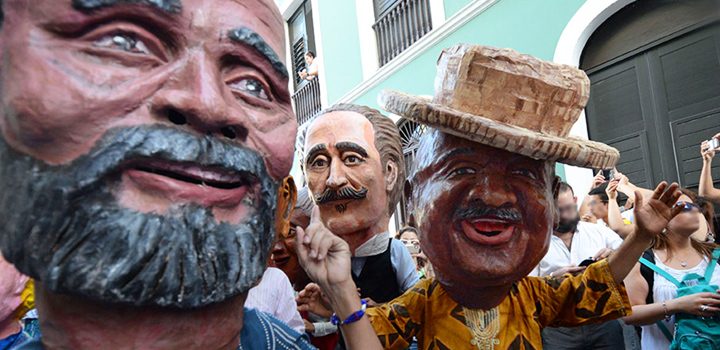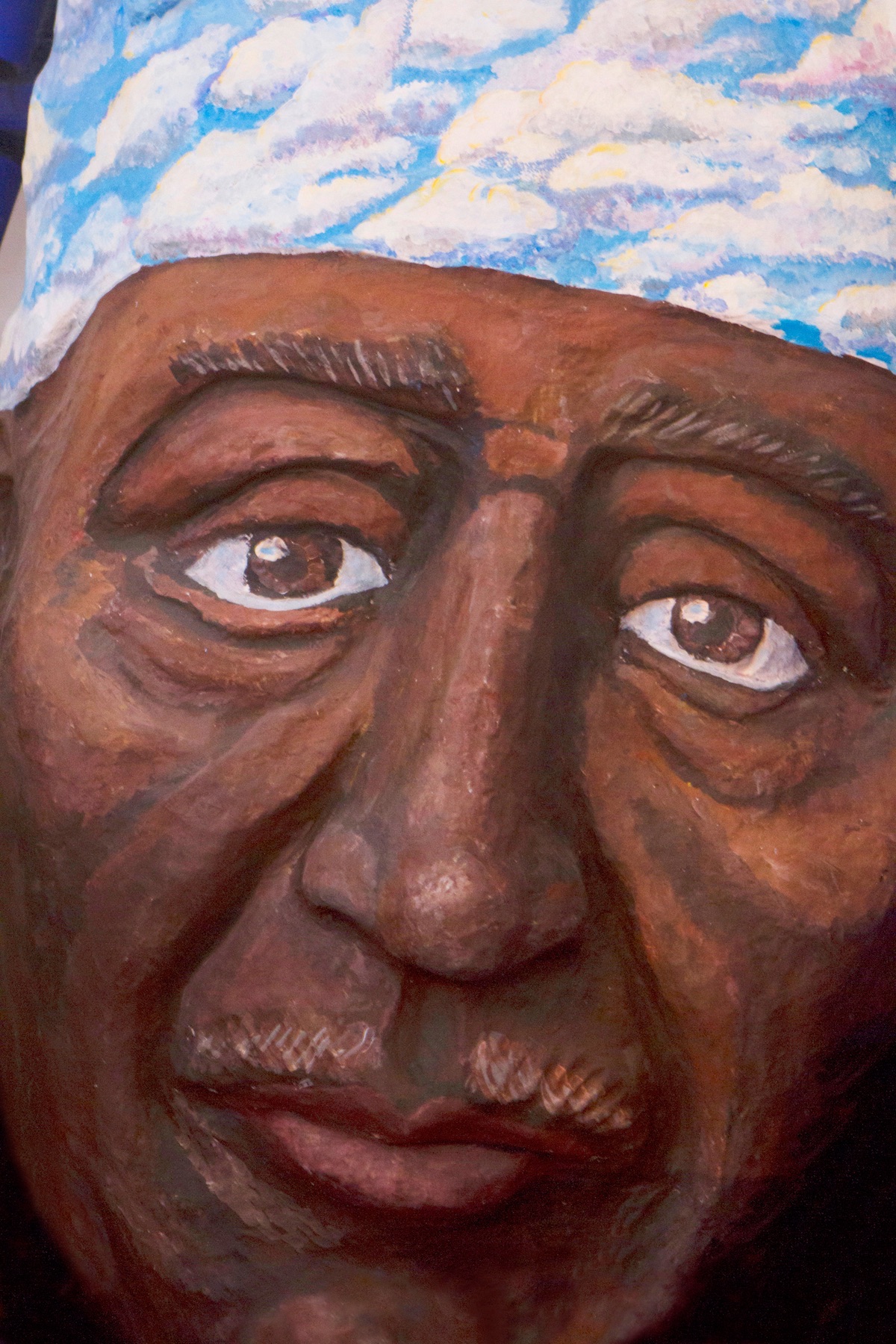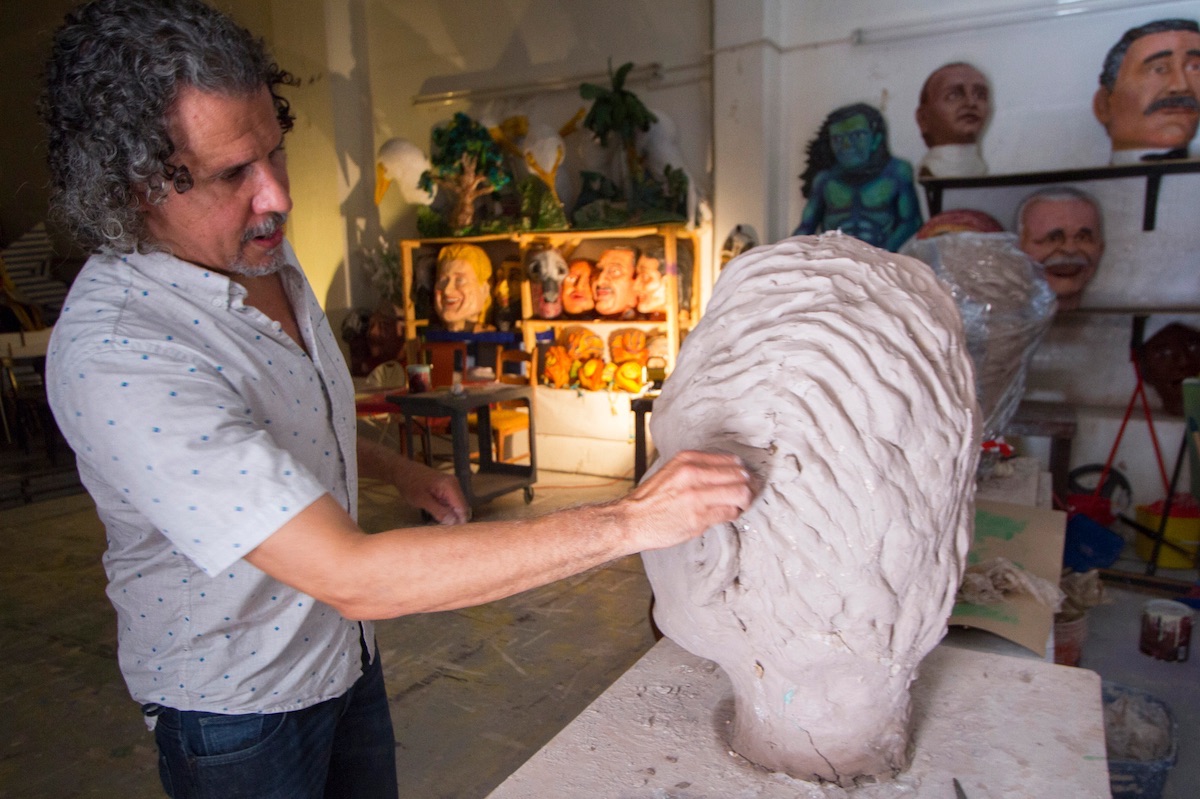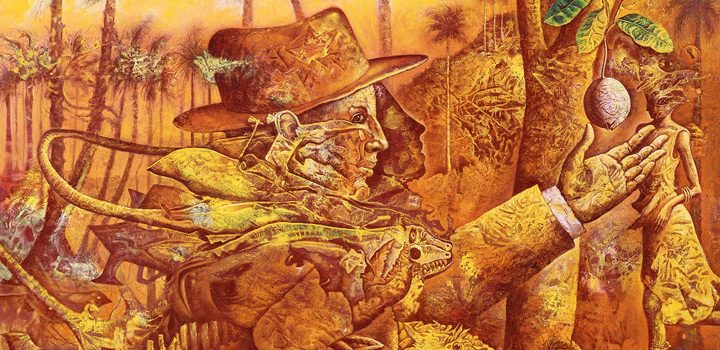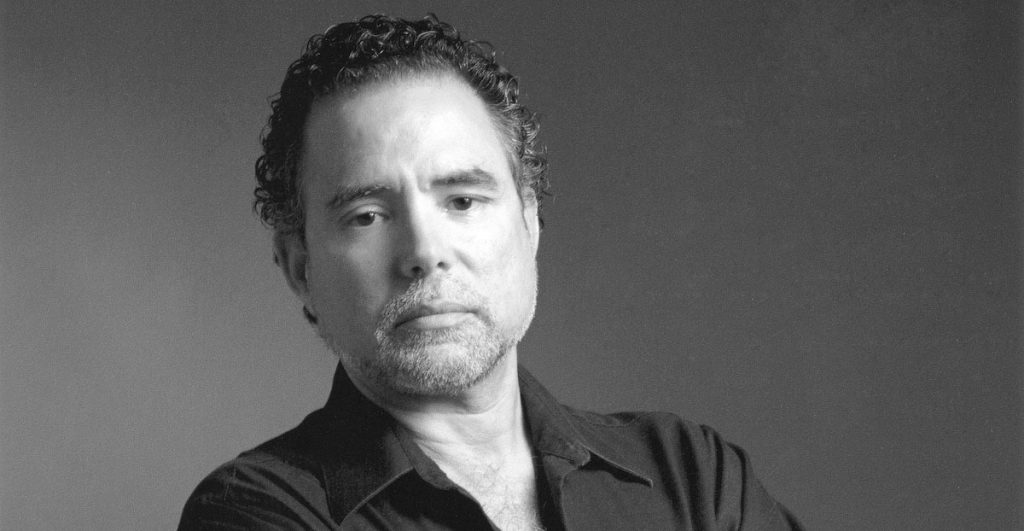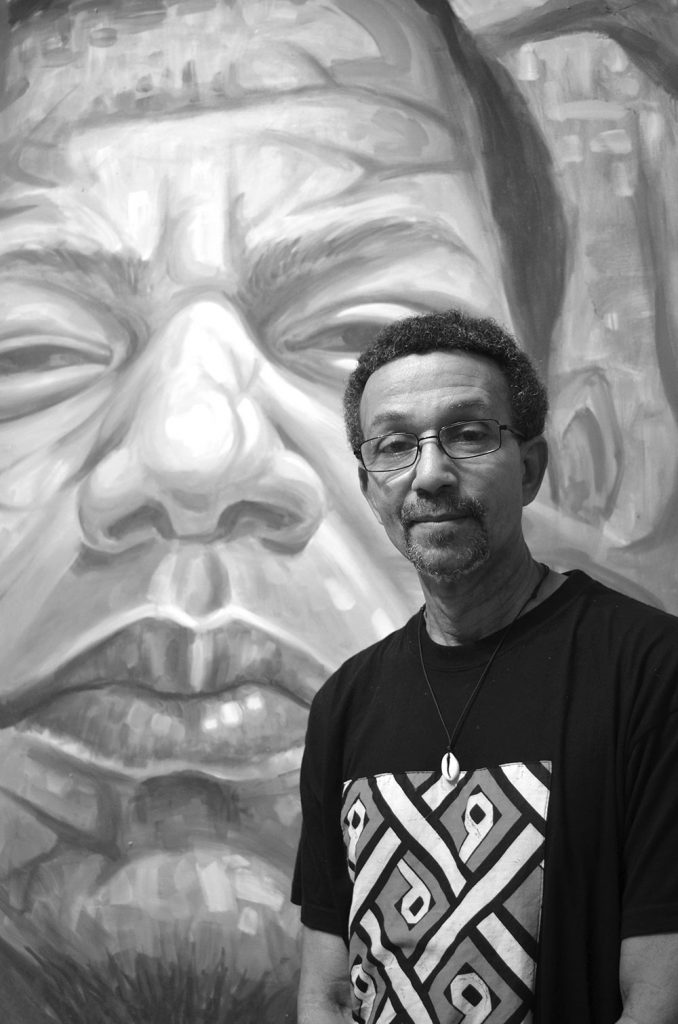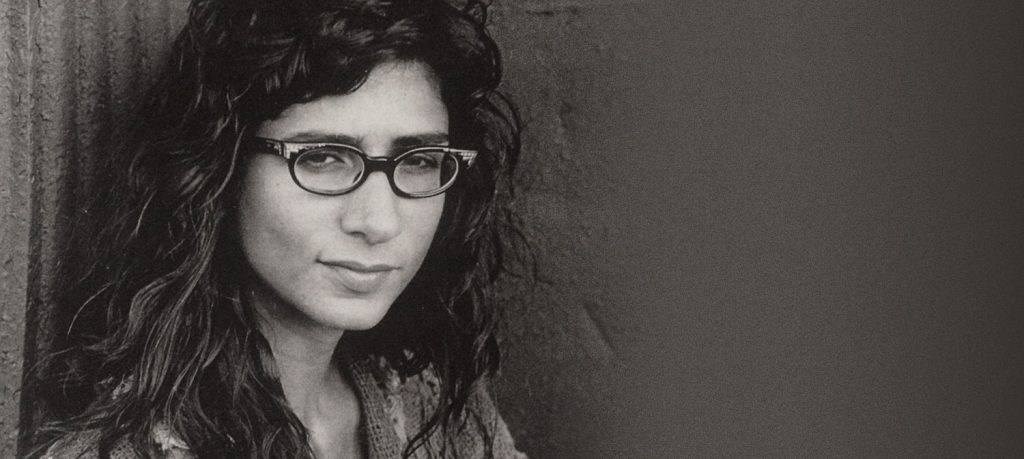Toast a new life among art and whimsy
Happy couples dancing inside an iconic building designed by MoMA architect Edward Durell Stone greet their guests among masterpieces by Jose Campeche and Francisco Oller, and pose for photos in front of a soaring sculpture by American pop artist Roy Lichtenstein or outdoors in an awe-inspiring romantic botanical garden.
Happy couples dancing inside an iconic building designed by MoMA architect Edward Durell Stone greet their guests among masterpieces by Jose Campeche and Francisco Oller, and pose for photos in front of a soaring sculpture by American pop artist Roy Lichtenstein or outdoors in an awe-inspiring romantic botanical garden.
Puerto Rico’s chic museums shine as bright as the island’s blazing blue skies, shimmering Caribbean waters, and sultry nights. They provide beautiful and unique venues to host wedding receptions with dramatic spaces, open courtyards, elegant galleries, and other variety of rooms so the special day can be remembered for years to come.
All across the country, museums of art, history, and science are opening their doors for wedding receptions—and an increasing number of brides and grooms are discovering: There’s no better place to hold their own historic events, and Puerto Rico is no exception.
Puerto Rico definitely has plenty of stunning hotel ballrooms that make for lovely venues, but commemorating your special day in a museum is unique. They offer great backdrops for wedding portraits, as well as vast indoor atriums and halls that comfortably accommodate hundreds of guests for dining and dancing. Best of all, museums often offer exclusive access to their collections. Guests can enjoy a one-of-a-kind wedding experience as they mingle among masterworks dating back to the 17th century to the present and world-class temporary exhibitions.
The Museum of Art of Puerto Rico situated between San Juan’s Condado bustling tourism hub and its cultural hub of Santurce is especially popular with couples who want a level of luxury. The main room, where you dine and dance is called the Grand Hall (which can fit up to 600 guests) and it’s sure to impress. It has a height equivalent of three stories and has a spectacular stained glass window designed by Puerto Rican artist Eric Tabales where the natural light from outside softly illuminates the entire area; and cocktails can be served outside overlooking a lush and beautifully manicured botanical sculpture garden.
Its 2.5 acre botanical sculpture garden is a true oasis that can transport the wedding guests a world away from the bustle of the city and can be combined and tented for a magical seated dinner for up to 130 guests. A walkway around the free-form pond eases through individual settings including a grove of native trees, a bamboo forest, and a prairie. More than a dozen sculptures are positioned in harmony with the scenery while several gazebos serve as perches for rest and relaxation. A terrace with a natural amphitheater sets the stage for open-air events.
Designed in accordance with the strictest and most modern standards, the Museum of Art of Puerto Rico was built by architect William H. Schimmelpfennig in 1920 and its 130,000 square feet of space includes 24 exhibition galleries.
Just blocks away is the Puerto Rico Museum of Contemporary Art in Santurce, which offers brides, grooms, and guests urban charm and historical elegance. Housed in a small but charming building, guests at the Puerto Rico Museum of Contemporary Art can stroll through galleries of work ranging from paintings and sculpture to mixed-media, sound, and video installations. But the party happens within its enchanting interior courtyard that can accommodate about 500 wedding guests.
The Puerto Rico Museum of Contemporary Art used to be a former public school built in 1918. The Georgian-style structure designed by architect Adrian C. Finlayson as part of a U.S. Department of Education’s drive to build public schools in urban zones, has been on the National Register of Historic Places since the late 1980s and was renovated under the direction of Puerto Rican architect Otto Reyes Casanova for its new role as home to the island’s top collection of contemporary art.
Another fashionable museum in Puerto Rico is the Ponce Museum of Art, a charming enclave of strong Catalonian heritage that captivates visitors with its small town flair and laid back atmosphere. The museum is located on the island’s sere south coast overlooking the turquoise waters of the Caribbean Sea in Ponce, known as the Pearl of the South, the second largest city outside the San Juan metropolitan area, and an interesting town for history buffs.
Inside, the architecture of the Ponce Museum of Art is simply ideal for dreamy wedding receptions with its stunning backdrops, sweeping spiral staircase, spacious halls, spectacular balcony and amazing garden.
The striking building is comprised of seven interconnected hexagons topped with glass cupolas, which allows natural light to pour in though its corners creating a perfect setting for wedding photos. The exterior garden that can fit up to 500 guests is distinguished by the Archipelago sculpture inside the central fountain. Situated on the second floor are the balconies that can accommodate between 60 to 300 people and have views of the garden and the impressive Roy Lichtenstein, Pinceladas al vuelo sculpture. Also on the second floor but in the annex building is the Caribe ballroom that fits up to 130 people and can be divided into two rooms and for receptions there is the intimate Granada room that was designed by Dr. Rene Taylor, the first director of the Museum who was an expert in Spanish baroque art and architecture, which is why this small space that fits up to 40 guests has fountains and brick floor detailing.
Recognized as an important center for European art in the Americas, its stunning collection – the finest in the Caribbean, provides a rich panorama of western art stretching from the Renaissance to the present day. Inside are more than 1,000 paintings and 400 sculptures covering classical, ancient and contemporary works. Among the prizes of the collection are works by Velasquez, Rubens and Rodin.
Also in Ponce is the Serralles Castle Museum, a Spanish Moroccan architectonic masterpiece that captures the history of the town. Framed in an elegant and tasteful environment, this venue offers beautiful terraces, charming gardens, and breathtaking views of the city of Ponce and the Caribbean Sea that will be longed remembered by wedding guests. It’s no wonder this luxurious mansion, once the home of the affluent Serralles family who built their fortune from sugar and rum, its most famous brand being Don Q, has won consecutively the Weddingwire Couples’ Choice Award from 2014-2016.
The bride and groom can opt to rent either the east terrace to accommodate up to 200 people or the west terrace that fits 300 or reserve both for a large wedding reception of 500 guests where sprawling cityscape and majestic ocean views is the astonishing backdrop. There is also the Don Juan Café terrace to accommodate smaller affairs up to 50 guests, the exterior fountain for 100 guests, and Japanese Garden for a maximum of 120 guests, all situated on the property’s 2.5 acres of magnificent landscape filled with impressive architectural details.
Explore Puerto Rico’s unique options for weddings and receptions that stand out from the rest and where dreams are made reality.
Exploring Puerto Rico’s colorful small treasures
No visit to the island of enchantment would be complete without taking a deep dive into Puerto Rico’s colorful folklore and traditions, and there’s no better way to experience this than through the rich talent fits artisans and their stunning crafts.
No visit to the island of enchantment would be complete without taking a deep dive into Puerto Rico’s colorful folklore and traditions, and there’s no better way to experience this than through the rich talent fits artisans and their stunning crafts.
Make sure to explore crafts like the exquisitely carved Santos figures, delicate Mundillo lace fit for a queen, horns-bedecked carnival masks, and the wooden mortar and pestle known as pilons, and numerous other works of art produced by these skilled crafts persons. Items span home decorations in clay, wood, paper and metal; hammocks; greeting cards; jewelry; clothing; tote bags; foods like sweets and rum cake; musical instruments such as guiros; cigars; and knick knacks. All locally produced, all mostly made by hand.
From San Juan to Rincon, Ponce to Humacao, you will see talented artisans sell their beautiful wares at street stands, during crowded fairs and at popular parks and beachfront. There are also stunning craft stores and boutiques and art galleries across the island, especially around renovated downtown areas and at shopping malls.
Old San Juan, however, is a must-visit for the craft aficionado, with some of the finest crafts shops in the Caribbean. At Mundo Taino (Taino World) and Puerto Rico Art & Crafts the full diversity of small-scale production is in full display souvenir shops and crafts specialty shops are not the sole places to find Puerto Rican crafts. Craftspeople can be found most days in different sections of Old San Juan. On weekends, there’s the Plaza La Casita market next to Pier 1 and the Paseo La Princesa Market, both of which are sponsored by the Puerto Rico Tourism Co. Maria V. Rivera Delgado, a tourism administration official, said some 38 artisans show their wares along the Paseo, a wide, scenic promenade that runs along San Juan Bay and the ancient ramparts and leads up to San Juan Gate, one of five entries that once led into the city. The markets are held Saturday and Sunday from 10 a.m. to 8 p.m.
Craft making in Puerto Rico is a rich tradition hewing to time-honored ways but that’s not to say it isn’t stepping up to the times. In fact, some of the crafts being produced these days by ceramists look more like art than artisanal objects. Some craftspeople are dropping autochthonous imagery and instead concentrating on more universal themes. While cheap and crudely made crafts are still to be found in souvenir shops, local production mostly reflects a high level of workmanship and skill. Tony Amador, the owner of Puerto Rico Arts & Crafts, which his mother Charm Amador founded in the late 70s, said the field is changing, with some artisans now incorporating technology into their process. It’s all an outgrowth of competition, the ubiquity of the internet which exposes artisans to new ideas and the artisans’ own evolution, he said.
One craft that remains strongly rooted in age-old tradition is Santos, Puerto Rico’s greatest contribution to the plastic arts, according to some art historians. These hand-carved figures, representing patron saints, angels, and Marian titles, have achieved such a cultural standing that antique Santos are now considered works of art and can be found in private collections as well as museums in Puerto Rico and the U.S., including the National Museum of American History of the Smithsonian Institution in Washington, D.C.
Santos are found in all the countries that were at one time part of the vast Spanish empire. According to historians, Puerto Rico’s Santos may also have a link with the Tainos, the island’s indigenous people. It was their custom to keep small statues as objects of veneration in tribal villages. Carved in stone or wood, the statues — known as Cemi — represented a god, spirit or ancestor.
The men and women who carve santos are called santeros and santeras. Their tools are basic: a knife and paint to add color to the figure. The best of these artisans are considered masters and it has become their practice to sign each piece as proof of its value. This was not always the case. Juan Botello, whose Botello Gallery carries antique santos made between 1850 and 1950, noted that santos dating from 1800 to 1900 were not usually signed and are characterized by a primitive style that contrasts the classic Spanish Santos made in a more realistic vein.
Santeros tend to stick to a single figure but when they resort to a group scene it is usually to portray The Nativity or The Three Kings. Religious figures are usually identifiable through the symbols they carry. For example, St. Joseph might be depicted holding the child Jesus in one arm and a staff in the other while St. Francis is usually portrayed with birds and animals.
The allure of the Santo is essentially its pared down simplicity. As one writer put it, “Santos are made with a humble touch and homespun beauty.” In addition to Botello, on Cristo St., another old San Juan store that carries Santos is Antiguedades Olé, on Fortaleza St. Its Santos are between 80 to 100 years old.
Masks have always fascinated people and Puerto Rico’s caretas certainly stand out for their flamboyance and wild colors. The masks are worn at carnival times by vejigantes, revelers who wear bat-winged jumpsuits and roam the streets singly or in groups. According to Amador, of Puerto Rican Art & Crafts, two types of masks are made in Puerto Rico, each tied to a different part of the island. The ones made in the southern town of Ponce, a major center for this craft, are made out of papier maché while those made in Loiza Aldea, an area near San Juan known for its artisans and dancers, are fashioned out of corn husks.
Though differently crafted, the mask portrays the same type of devilish figure. Its main features are a leering mouth ringed by fangs, bulging eyes, and long horns that some artisans render as wavy Medusa-like tentacles.
Scary-looking, sure, but fun, the masks are painted in vivid, contrasting colors set off by pointillist details for greater decorative effect; the palette takes in practically all hues though the more traditional masks lean towards black, red and yellow, colors associated with hell, to which the masks are believed o allude.
According to historians, carnivals and masks are rooted in medieval Spain where, starting in the 17th century, processions of marching devils were held to scare sinners into returning to church. The vejigantes surfaced in Spain as part of the patronal festival of Santiago (St. James); they were meant to be a representation of the devil in the fight of good versus evil but also of the “evil moors.” In Puerto Rico, these Spanish traditions melded with others brought in by African slaves.
To experience the thrill of vejigantes in full mask regalia, consider attending the Fiesta de Santiago Apostol, or St. James Festival, held yearly in Loiza Aldea during the month of July. More masks are to be seen at the Ponce carnival. It has been running for more than 250 years but you’ll have to wait for the next edition in 2019 as the event is typically held the week ending on the day before Ash Wednesday.
One craft that seemed headed towards extinction has instead experienced a welcome revival, bringing it back to the forefront. It is the ancient art of mundillo or bobbin lace making.
Mundillo is a decorative lace made by braiding and twisting lengths of thread bound on bobbins. The word mundillo, which means little world, refers to the cylindrical pillow on which the weaving is kept in place. The finished product can be used as clothing, border finishes for tablecloths and handkerchiefs, or to decorate shirt collars, dresses and wedding gowns.
While some claim Mundillo lace is made only in Spain and Puerto Rico. Benito “Mokay” Hernandez Vale, founder and director of the Mundillo Museum in Moca, begs to differ. He said this type of lace making is popular in many European countries and likely originated between the third and seventh century A.D. though it could even be older as bobbin lace has been found in ancient pharaonic tombs.
According to Hernandez, interest in the craft has been growing over the past 15 years and he estimated that more than 3,000 people on the island are now practicing it, and it’s not just women.
The Mundillo Museum, located in a one-story building in the heart of Moca, on Puerto Rico’s north-western side, was inaugurated in July 2005. Its collection of hundreds of lace items includes a tablecloth from 1896 and, its most valuable piece, an 8 foot high by 4 foot wide lace map of the town of Moca made by a group of lace makers in 2014 to celebrate the institution’s 10th anniversary. The museum is open Monday through Saturday from 8 am to 2 pm (telephone: 787-877-3815).
In San Juan, mundillo products can be found at Plaza Las Americas where lace maker Mary Quiñones runs a cart business named MQ Mundillo de Moca on the ground floor of the shopping center, near the Banco Popular branch and the tower. Items for sale include handkerchiefs and baby clothing, bibs and blankets made by her family workshop.
No self respecting Puerto Rican kitchen would be caught without a pilón. The mortar and pestle has a long history dating back to the island’s indigenous people. But unlike the small-sized mortars most people are familiar with, the ones used by the Tainos were waist high receptacles made from hollowed out tree trunks. The cavity, measuring approximately 25 inches in diameter, was burned out. The large pestle, or maceta, that went along with the large mortar were also carved out of trees. Tainos used the pilón and the maceta to mash corn, spices, and medicinal herbs.
Today, this kitchen utensil comes in handy to grind herbs for sofrito (the base for delicious rice, beans and stews), to prepare spice mixes and condiments, and for all sorts of crushing of garlic, plantains, corn and coffee. It’s the key tool to make mofongo, one of Puerto Rico’s most iconic dishes consisting of mashed plantains stuffed or accompanied by meat, fish or fowl.
The typical pilón is made from the wood of the Caoba or Guayacan trees, fine and durable hardwoods native to the island. Artisan Antonio Rivera, whose workshop is in the town of Morovis, in the island’s central region, said people tend to prefer pilones made out of caoba for its warm, red color. He has been making pilones since he was 13, a craft he learned from his carpenter dad. The pilones for kitchen use typically range in size from 6 to 10 inches high; Rivera also makes them larger by request. He can be contacted through his Facebook page under the heading Pilones de Puerto Rico.
Crafts, a source of independent jobs for countless Puerto Ricans, are an expression of a people’s artistry and history. Making an object by hand is an activity that takes time and effort. Either as a gift for family and friends or as a keepsake of a memorable trip, a crafts item is a small treasure.
Beyond the beach lies Puerto Rico’s dazzling shopping experience
It’s not all about the beach even though it’s a major distraction when visiting Puerto Rico. The island’s unique and fun shopping experience will dazzle you as much as its sparkling blue shoreline, lush green rainforest, highlands, and its majestic centuries-old castles and cathedrals.
With stylish malls and charming shopping areas across the island, Puerto Rico is the Caribbean’s most sophisticated shopping destination.
It’s not all about the beach even though it’s a major distraction when visiting Puerto Rico. The island’s unique and fun shopping experience will dazzle you as much as its sparkling blue shoreline, lush green rainforest, highlands, and its majestic centuries-old castles and cathedrals.
Puerto Rico, a center of Caribbean trade for at least 500 years, retains the feeling of an exotic tropical bazaar with wonders from across the world brought all within your reach. There’s no better shopping paradise to venture to on your holiday.
With stylish malls and charming shopping areas across the island, Puerto Rico is the Caribbean’s most sophisticated shopping destination. It offers the glamour of New York City’s Fifth Avenue and Los Angeles’ Rodeo Drive, as well as an inspired shopping experience in beachfront and tropical urban areas.
In Old San Juan, and at historic downtown squares across the island, chic boutiques rub shoulders with trendy shops, exquisite fine jewelers, and art galleries that are housed in renovated Spanish colonial and Art Deco architectural dreams. Artisans sell plenty of unique trinkets and beautifully fashioned wooden statues, original works of art and handmade ceramics, cigars as well as fashion accessories from stands set up along bayside promenades and on historic plazas. Treasure hunters just might find what they never knew they needed.
Meanwhile, fabulous haute couture and jewelry emporiums – emblazoned with the most famous names in fashion are ensconced in gleaming luxury condominiums that share space with swimsuit and trendy surf shops, local independently owned boutiques, and souvenir stores, along palm-lined ocean-side drives in the swanky and highly popular Condado and Isla Verde beach districts.
Elsewhere in San Juan, there is an explosion of retail creativity taking place in up and coming urban renaissance zones in downtown Santurce and along Loiza Street by the beach at Ocean Park as well as in the Miramar neighborhood and the Hato Rey financial district. You’ll find street fashion boutiques, dazzling food shops, and beachwear stores among others. There are lots of fun finds here.
The retail scene plays out across the island, with other coastal towns and cities having similar seaside boulevards with stores near historic downtown harbor and tourist districts, all along Puerto Rico’s coastline.
In small towns on the island, local artisans often sell their wares from stands along the waterfront area, known as el malecón, or harbor district. Areas of urban retail renewals are flowering in towns from Aguadilla to Humacao, along the coast and through the central highland. Patron Saint festivals held in towns across the island are showcases for Puerto Rico’s best artisans, as are agricultural fairs, musical festivals and other special events that take place through the year.
Meanwhile, a modern shopping mall is within reach from anywhere in Puerto Rico as a palm-lined beach, so there is always the ability to escape into a nearby world of cool air-conditioned retail wonder, whether it’s just to get a break from the sun or to get out of the gloom of a rainy day.
Island shopping malls offer as spectacular retail experience as malls throughout the rest of the U.S. but are livelier. Many hold live classical and jazz concerts, fashion shows, art exhibits, agricultural fairs, car and boat shows, and other special events. Malls offerings go way beyond just shopping; they are home to gourmet restaurants and popular bars, health and beauty spas, cinemas and an ever-changing array of additional entertainment options. They also often radiate a contemporary, tropical sophistication – a celebration of the island’s natural beauty and its refined culture.
You’ll find long-time favorite names and unique local and international brands still unknown in the U.S. market. Famous stores like Macy’s, Victoria Secret, Sears, Gap, Banana Republic and JC Penny have multiple locales. There are also international fashion boutiques, such as Zara from Spain and Totto from Latin America, among others.
Home-grown island boutiques like Valija Gitana and Hecho a Mano have also established a presence in the malls. The shopping districts collide with island culinary hot-spots. Some of the best chain restaurants in the world – like P.F. Chang’s, The Cheesecake Factory, Olive Garden, and Macaroni Grill – operate out of island malls, and island tourism districts abound serving flavorful culinary creations by talented chefs from Puerto Rico or who have adopted the island as their new home.
Plaza Las Americas, which turns 50 this year, has been the largest – and most influential – mall not only in Puerto Rico but the whole Caribbean since it opened, and with more than 300 stores, it continues to exert an outsize influence on the retail scene today. Plaza, as it is called, has the broadest array of stores in the region and is also a perfect place to have dinner, check out a live event or movie or run errands, since there is also a post office and office buildings with doctors and healthcare professionals.
The fabulous Mall of San Juan, the newcomer on San Juan’s retail scene, has brought the island’s shopping experience to storied new heights, while also serving as an important hub for local boutiques and talent, and incredible restaurants. It all takes place in a thrilling, luxurious modern design, built on a privileged location just outside San Juan’s International airport. The mall goes out of its way to cater specifically to tourists.
The San Juan metro area also offers the Outlets at Montehiedra, a mix of brand name outlet stores and local offerings housing more than 100 stores ranging from Marshall’s to Guess.
Other major cities in Puerto Rico also have quality shopping malls like Plaza del Caribe in Ponce and the Mayaguez Mall in Mayaguez.
There are two outlet malls, The Outlet at Route 66 in Canovanas and Puerto Rico Premium Outlets in Barceloneta that are shopping destinations in their own right and can be combined with a visit to other area tourist attractions.
You’ll find familiar names like Perry Ellis, Polo Ralph Lauren, Tommy Hilfiger, Gap and Guess in the midst of exotic island locales. The Outlet at Route 66, which is situated east of San Juan, offers both discount pricing on brand names and a platform for local shopping experiences, in the shadow of El Yunque, Puerto Rico’s majestic rainforest. This outlet mall is home to Burlington, Urban Planet, Lids, Marianne, Tommy Hilfiger, Novus, Bakers and Caribbean Cinemas just to name a few. But the newest attraction in this outlet mall will be a bowling alley, crazy car ride, arcade games, a tight rope walking platform and go karts. Visiting the rainforest and the mall in a single trip is easy, and there are also beaches nearby at Luquillo and Fajardo, what else can you ask for.
You’ll have to drive through karst country, marked by limestone haystack hills, towards the northwest to get to the outdoor park and walk Premium Outlets, which looks like a colorful country village but house brand name outlet stores like Adidas, American Eagle Outfitters, Forever 21, Lacoste, and Polo Ralph Lauren Factory Store offering big bargains on famous clothing and other accessories. After your shopping spree you can hit the nearby underground wonderland of the Camuy River Cave Park and the celestial splendor of the Arecibo Observatory.
The range of shopping in Puerto Rico is so vast that some visitors can simply book their plane tickets purely for one reason: to shop til they drop!
Weekends were made for brunching
Weekends are for brunching — chatting with friends, digging into a delicious stack of syrup-drizzled pancakes, lingering over a café con leche, zesty Bloody Mary or a fruity mimosa. Fortunately, Puerto Rico knows how to brunch, and there are a plethora of chic and cozy restaurants where the food is both delicious and highly Instagrammable.
Weekends are for brunching — chatting with friends, digging into a delicious stack of syrup-drizzled pancakes, lingering over a café con leche, zesty Bloody Mary or a fruity mimosa. Fortunately, Puerto Rico knows how to brunch, and there are a plethora of chic and cozy restaurants where the food is both delicious and highly Instagrammable.
Soda Estudio de Cocina is a charismatic and unique restaurant tucked away in Cuevillas St. in Miramar, just a few blocks from the Fine Arts Cinema Café. Its eclectic decor, laid-back atmosphere, unique charm, and great food touted as urban creole make it a perfect place to enjoy brunch and connect with friends.
Some of the best menu items include steak and eggs with a side of truffle fries; pastrami, Serrano ham, and mozzarella cheese; the egg breakfast pizza; asparagus-wrapped bacon with eggs and hollandaise sauce; the mac & bacon cheese omelet; or whatever your little heart hungry heart desires.
Combine these delicacies with Soda’s delicious mimosa mojito or watermelon Moscow mule to spice up your dining experience. Brunch hours are every weekend from 10:30 a.m. to 3 p.m.
Looking for a seriously good brunch spot? Look no further and visit Choices Restaurant at the Sheraton Puerto Rico Hotel & Casino in the Convention Center district. It’s sophisticated yet casual with live music and traditional brunch choices with a creative twist.
Try the crab cake Benedict, or the Brunch Burger prepared with sweet Mallorca bread rolls, bacon, cheese, topped with crispy onions and eggs, or the fantastic Guava pancakes, or the Boricua Omelet with pork, local white cheese, and tomato avocado salad topping. All are absolutely yummy! And all dishes come with a complimentary Mimosa. The brunch menu is available every Saturday and Sunday from 11 a.m. to 2 p.m.
Over in the Condado, widely known as a chic tourist area with fabulous beaches, shops, and hotels in the heart of San Juan, there is a slice of brunch heaven called Blonda for those with pure food indulgence in mind.
This cozy and modern restaurant serves lobster frittata; doughnut sliders; chicken and waffles; pancakes with bananas, strawberries, blueberries and whipped cream or Nutella; ranchero eggs; salmon Eggs Benedict; and an incredible French toast prepared with thick-sliced bread topped with caramel sauce, strawberries, and vanilla or Nutella. Brunch hour is from 8 a.m. to 3 p.m.
With the Atlantic Ocean as the backdrop, Ola Oceanfront Bistro at the sophisticated Condado Vanderbilt Hotel provides the exquisite and unique flavors of Puerto Rican fare.
Its Sunday buffet brunch with live entertainment is out of this world with dishes prepared with the freshest products.
Enjoy fluffy pancakes, frittatas, chicken escabeche or Paella del Campo made with chorizo, pork, ham, chickpeas and plantains accompanied by artisanal bread, fresh fruit, assorted fresh pastries, or bacon.
Combine these classic brunch favorites with bottomless mimosas or signature cocktails like the spicy Bloody Mary, Mai Tai, Old Fashioned, Perfect Martini or Dark and Stormy – made with dark rum, ginger beer, and lime. Sunday brunch is from 11:30 a.m. to 4 p.m.
And you can never go wrong with the Boozy Brunch Party at Serafina San Juan every Saturday from 1 p.m. to 5 p.m. Enjoy breakfast and lunch dishes like delicious orange-cinnamon brioche French toast, lemon ricotta pancakes, smoked salmon benedict and steak and fabulous eggs accompanied by a lively stream of Bloody Mary’s, mimosa’s and more.
Bring your friends and make an afternoon at Serafina as your new weekend kick-off tradition.
Looking for something different for brunch that is available all day, than Pannes in Condado may be a perfect option. When visiting ask for the “French Mess,” made with three fried eggs, bacon, melted cheese served between two French toasts with cream cheese. Mmmm what a delicious mess! Or try the Brunch Burger where a beef patty is topped off with bacon, onions and an egg or the famous Ashford Special Royal, which consists of French toast with Nutella and fresh fruit.
Fresh squeezed fruit nectar and Prosecco make for one refreshing brunch Bellini. But why not pair your morning feast with a glass of Sicily. It’s made with lime juice, simple syrup, Luxardo Maraschino Liquor, angostura bitters, and vodka. Or try the Julius Caesar cocktail with Cynar, Fernet Branca, red grapefruit, and vodka – all perfect concoctions to sip on while eating at Nonna Cucina Rustica.
This inviting restaurant located on San Jorge St. in Santurce has a similar vibe to Italian bistros found in NYC mostly due to its exquisite five-star cuisine.
Whether you’re looking for delicious steak and fried eggs; frittata with mushrooms; Eggs Benedict with red potatoes as a side; or flavorsome French toast made with homemade brioche bread overflowing with almonds and fruit than Cucina Rustica is the place to go. Sunday brunch hour is from 10 a.m. to 3 p.m.
Isla Verde boasts the best beaches and water sports in the metro area, but Bistro Café rules the brunch scene. Its menu is exceptional, and its options satisfy those with a sweet tooth or a salty side.
The Mendoza consists of scrambled eggs with longaniza and mixed veggies and the irresistible Romeo and Juliet, a French toast dish full of cream cheese, bacon, fruit, and Nutella. And you can’t forget to point out the 2 for 1 mimosas. Brunch hours are from 7 a.m. to 3 p.m.
There’s no doubt that San Juan’s plate is full of fresh brunch options and its restless chefs are turning the city into the nation’s breakfast capital.
There are way too many excellent places to have brunch especially in the artsy and hipster town of Santurce like Gallo Negro. The restaurant is famous for its mac and cheese prawns and French toast made with Mallorca bread and Barrilito rum.
Abracadabra Counter Café with the perennial brunch favorite of scrambled eggs with veggies and goat cheese, French toast made with brioche bread topped with fruits and whipped cream.
And there’s Tostado with its breakfast bowel cooked in a mini cauldron with spinach, mixed veggies, and goat cheese topped with two fried eggs.
Best in the West
Over on the west coast, famous for its beautiful beaches, stunning sunsets, tranquil turquoise waters and colorful reefs with active marine life, is the famous bakery Levain Artisan Breads in Aguadilla. This shop serves a no-frills brunch menu on Sundays full of traditional comfort foods at its next door Debut Cocina Rustica venue.
Here you will find the best lattes, breakfast sandwiches as well as the classic Eggs Benedict served with a side of home fries and greens, pan fried brioche with eggs and bacon and of course the all-time favorite Croque Madame sandwich made with three kinds of bread with ham, gruyere cheese, and béchamel sauce topped with a fried egg.
Uva Playa Restaurant in Mayaguez, Puerto Rico’s third largest city, is a casual and stylish eatery perfectly positioned at the water’s edge where you can enjoy an expansive view of the Atlantic Ocean through its large windows or outdoor terrace.
You can’t go wrong with ordering its simple brunch options perfect for the hungry or hung-over and make sure you order the passion fruit sangria or coconut mojitos which are dangerously delightful.
For those who love to eat, the English Rose in Rincon is one of the best places to get your brunch on. This lovely quaint restaurant located inside a country inn has a Caribbean feel with old English charm. Even though the venue is small, it makes up for its size with breathtaking panoramic views of the Caribbean Sea and its artistic menu.
A must-try is the Full Monty; a classic British breakfast combo made with bacon, homemade pork sausage, two eggs any style, oven-crisped potatoes with butter, caramelized onions, and cabbage with a slice of toast. Or opt for the Encore Eggs Benedict (poached eggs on an English muffin, Canadian bacon, and hollandaise) or the Benny Hill that substitutes the bacon for smoked salmon.
English Rose has an impressive menu and only opens for breakfast and brunch from 8 a.m. to 12 p.m. and is often packed with people. If anything, take that as a marker of great food.
Southern Comfort
Ponce es Ponce (Ponce is Ponce), a simple yet telling Puerto Rican saying about the second oldest city of Puerto Rico. And Lola Eclectic Cuisine is simple and all about brunch.
If you’re hungry for more than just bites, La Plaza three-egg fluffy omelet is the way to go. It’s served with ham, bacon, Italian sausage, tomato, green peppers and American cheese. The French toast is made with Puerto Rican criollo bread. What can be more savory? After stuffing your tummy, a walk around the city of Ponce, known as the Pearl of the South, will make you feel the magic of this city with its elegant neoclassical and European style architecture.
At Melao Coffee Shop at the Ponce Plaza Hotel and Casino, their all-day breakfast and brunch menu (from 7 a.m. to 10 p.m.) appeals to both the novice and foodie through classic comfort fare, all-encompassing a key ingredient, eggs.
Signature dishes include Mallorca bread filled with eggs, ham, and American cheese; the Melao Omelet with ham, bacon, Italian sausage, tomato, green peppers and American cheese with a side of sautéed potatoes; the classic scrambled eggs wrap; and the Spanish Florentine Omelet made with spinach, tomato, mushrooms, peppers, and muenster cheese.
Or try the sweet treats like a home-style French toast with loads of powdery white sugar, maple syrup, and fresh strawberries. The fluffy flapjacks or light waffles are perfect with Nutella, whipped cream and fresh fruit with a side of crispy bacon. But the headliner of this star-studded cast of multi-faceted delectables is the coffee.
The menu features a variety of hot beverage options like espresso, café Bombon (espresso with sweetened condensed milk), macchiato with a dash of milk, latte, American, American cappuccino, Italian cappuccino, chai latte, mocha latte, Mexican spiced cocoa, and hot chocolate. Also, house-crafted natural juices, smoothies, Acai bowls and more.
Over in Guanica, you can enjoy the shimmering coastline and swimming pool area of Copamarina Beach Resort and Spa while you tuck into a delicious pork sandwich on sweet Mallorca bread basted with garlic and pepper sauce, and Swiss cheese accompanied by corn fritters at Alexandra restaurant.
The delicious brunch menu (every Sunday from 11 a.m. to 3 p.m.) offers bottomless mimosas and live music. Looking for an egg dish with a twist than try the steak and eggs with a side of fries or the smoked salmon and boiled eggs with purple onions, olives, and toast with a side of tomato and asparagus salad with lemon dressing. Buen Provecho.
Puerto Rico foodies flock to food truck heaven
Food trucks are popping up like mushrooms and are quickly gaining prominence on the island of enchantment. They draw everyone from hungry college students and office workers searching for quick meals to discerning foodies who know that sometimes the best food doesn’t always come from a fancy restaurant. San Juan has two popular food truck spots – Lote 23 and Miramar Food Truck Park.
The trend of dining at food trucks, seen across the U.S., is now increasingly popular in Puerto Rico especially in the hip and fashionable city of San Juan.
Food trucks are popping up like mushrooms and are quickly gaining prominence on the island of enchantment. They draw everyone from hungry college students and office workers searching for quick meals to discerning foodies who know that sometimes the best food doesn’t always come from a fancy restaurant. San Juan has two popular food truck spots – Lote 23 and Miramar Food Truck Park.
Lote 23 has turned a once abandoned lot, wedged between two building, into a culinary oasis located in the art and music district known as Santurce. With four terraces, a stage, and plenty of parking spaces, Lote 23 showcases a variety of kiosks and Airstream trailers serving tacos, pizza, donuts, burgers, popsicles, noodles, cocktails, coffee and more.
Large table umbrellas and overhead canopies, as well as outsized industrial fans, provide diners with plenty of shade and cool breezes. Culinary offerings provided by veteran as well as up and coming Puerto Rican chefs include:
Panka which serves Peruvian street food with a creative twist; noodles or rice bowl with meat and veggies made by Wok It!; Dorotea’s Pizza and it’s wood fired thin crust delights and homemade cocktails; Sr. Bigotes Mexican tacos; Pernileria Los Proceres serving roasted pork inspired options and craft beer; savory buttermilk dipped fried chicken at Hen House; Caneca a mobile cocktail house serving fresh juices and top shelf liquor; donuts by Do de Donas; El Joint Burger serving beef, lamb and salmon sliders with innovative toppings; espresso, specialty coffee, and experimental coffee drinks by Café Regina; Belgium-inspired fries at Bayard; La Alcapurria Quema’s Puerto Rican soul food; Poke bowls at El Jangiri; tasty desserts at La Postreria; lobster and salmon mac & cheese as well as variety of gourmet grilled cheese sandwiches at Lolo’s Mac & Cheese; Croqueteria serves all types of gourmet croquettes; and Señor Paleta with its fresh fruit popsicles.
Lote 23 is open Tuesday, Wednesday, and Sunday from 11:30 a.m. to 10 p.m. and on Thursday, Friday, and Saturday it closes at midnight. Average price, depending on the kiosk, ranges from $9 to $12.
This facility hosts two weekly events. Cine 23 is held every Wednesday at 7:30 p.m. where international, documentary and short films are shown on an outdoor screen. Santurce Yoga held every Sunday at 9 a.m. in collaboration with El Estudio. Also on weekends guests can expect to enjoy live music.
El Miramar Food Truck Park at Stop 15 is like its counterpart, transforming the palate of the Puerto Rican diner and adding much-needed entertainment thanks to the island’s Millennials.
The Meatball Company offers its customers a variety of delicious handcrafted meatballs made out of chicken, beef, pork, and lamb served up in sliders, subs, and gyros.
Yummy Dumplings makes an assortment of tasty dumplings filled with chicken, skirt steak, pork, sweet plantains, and malanga, among other combinations. Its sauces include peanut, ginger soy, and spicy mustard as well as Korean tacos.
Peru Rico has a variety of Peruvian treats, and its ceviche is to die for. The empanadas fried plantains, yucca fries, and fried mahi mahi are packed with savory depth.
Pa’l Pita’s specialty is yummy gyros filled with skirt steak, lamb, or chicken.
Que Toston serves a delicious twist on Puerto Rican classics like arroz con pollo (yellow rice with chicken), fried cheese and arepas (corn cakes), not to mention its canoas (sweet plantain canoes) and patacon (fried green plantains used as bread substitute) with plenty of delicious toppings.
Miramar Food Truck Park opens every Wednesday, Thursday, Friday and Saturday from 12 p.m. to 11 p.m. and Sunday from 2 p.m. to 8 p.m. Average plate varies from $5 to $15. This venue holds activities such as Movie Nights, BBQs and BYOB.
Food trucks in Puerto Rico were only known to serve inexpensive food like hamburgers, hot dogs, and tripletas (a skirt steak, ham, and pork sandwich) and local staple foods like comida criolla consisting of rice, beans, stews, pork, and plantains.
This pattern changed in 2012 when a different breed of food trucks —pioneers Yummy Dumplings and El Ñaqui — began offering casual gourmet food like ribs, Korean style chicken, pulled pork, Asian style skirt steak, wings, salads, sides, and soup.
These food trucks threw the old and familiar menus out the window and started introducing innovative flavors to their customers. Both trucks quickly gathered a cult-like following and their success inspired others to take a chance and start up their own food trucks.
Today, there are around 80 food trucks all over the island, most are in the San Juan metro area but there are fantastic food trucks everywhere from Caguas to the popular beach towns of Aguadilla and Rincon — and the number grows monthly.
Diners now have everything in Caguas from Mexican food at La Chilanguita in Gurabo to El Churry (also located in the towns of Carolina, San Juan, Luquillo and Levittown) with its special tripletas on sobao sweet bread to Persian food at the Mill Urban Bistro to mofongo, plantain soup, nacho criollos and pasta at La Mancha de Platano. And FOK Brewery serves up craft beers and microbrews with unique flavors. Another food truck inspired by traditional Puerto Rican cuisine is Cosechas, which elevates its cooking with modern and innovative touches. Try the turnovers, skirt steak, fried pork, steak sandwich, fried plantains, soup of the day, sweet potato gnocchi and rice and beans. Absolutely delicious!
In Rincon, Fire Island Surf & Turf Co. in Rincon provides casual street grub from tacos and tosadas to kebabs and sandwiches and Jack’s Shack shines with its grilled tuna tacos, homemade veggie burgers, acai bowls and gluten-free chocolate chip cookies.
On the northwestern coast, there is yet another much-visited food truck park called the Aguadilla Food Truck Park. This casual gastronomic retreat features mouthwatering delights from Tako-G which features Japanese street food fare with everything from ramen noodles to pho; succulent gourmet burg ers at Bluefin; Tuk Tuk and its amazing Thai food; Ribs Smoke Shack with plenty of BBQ options; and Demitasse with its gourmet coffee and artisan ice cream.
The Aguadilla Food Truck Park opens from 12 p.m. to 8 p.m. and every Sunday from 3 p.m. to 8 p.m.
Slowly but surely, these food trucks have done the unimaginable: reshape the Puerto Rican palate. Whether you are looking for a slice of pizza or a new gourmet creation, you will definitely find a food truck for your inner foodie in Puerto Rico.
En Mi Viejo San Juan
Anyone who has spent enough time in Old San Juan to be seduced by this gorgeous Spanish colonial jewel by the sea will leave still longing for “en mi Viejo San Juan,” or “in my Old San Juan,” just like that classic romantic ballad by Puerto Rican song writer Noel Estrada says.
Anyone who has spent enough time in Old San Juan to be seduced by this gorgeous Spanish colonial jewel by the sea will leave still longing for “en mi Viejo San Juan,” or “in my Old San Juan,” just like that classic romantic ballad by Puerto Rican song writer Noel Estrada says.
It won’t take long to get smitten. Old San Juan is the Americas’ most stunning restored Spanish colonial sector. Perched on a headland overlooking the dramatic ocean coast and the island’s main harbor, the mile-square city has museums, galleries, and boutiques selling fine art, crafts, and other unique items from around the island, region, and world, as well as some of the city’s finest hotels, restaurants, bars and other night spots.
Its blue-tinged cobblestone streets, originally built from the ballast of New World explorer ships, descend from an ocean-side boulevard to the wide promenade lining the tranquil waters of San Juan bay. They are lined with colorful colonial homes, with balconies full of bougainvillea, and deftly designed office buildings, ancient cathedrals, and stately government buildings and city plazas. The architecture spans Spanish colonial to baroque to Gothic to Art Deco.
At a minimum, you’ll want to spend a morning or afternoon shopping and seeing the sites in Old San Juan, but if time warrants, there is enough to do to fill a full day. Make sure to have a delicious, gorgeously set lunch or dinner (or both!) at one of the Old City’s prime restaurants.
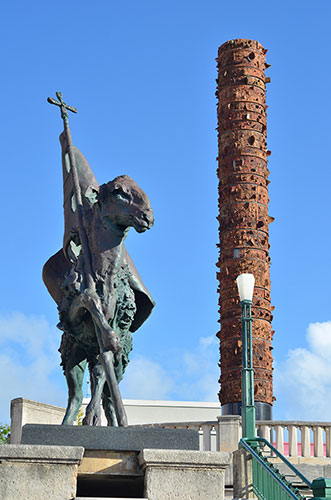
Plaza del Quinto Centenario (Quincentennial Plaza) was inaugurated in 1992 to celebrate the 500th birthday of the founding of the New World by the Spanish.
The Old City is largely defined by its twin fortresses – El Morro, or Castillo de San Felipe del Morro, and San Cristobal, or Castillo San Cristobal – that tower over, respectively, the entrance to San Juan Bay and the narrow land-bridge connecting the old city to the rest of San Juan. They combine to form the San Juan National Historic Site, which is managed by the U.S. National Park Service. There is trolley service between the two installations, but the Oceanside sidewalk makes for a great walk, especially on sunny days.
The fortresses and the massive wall surrounding the city have survived natural disasters and foreign invasions for some five centuries and still wield an enormous presence in the life of Old San Juan. They are filled with historic treasures and offer dramatic views of the tropical ocean, with historic exhibits, guided tours and informational brochures.
El Morro unfolds in a number of layers, with ramps winding from the dungeons to the troop barracks to the iconic guard towers. Its northernmost point overlooks the ocean surf crashing against the rocky coast. The great green lawn surrounding El Morro has become a favorite spot to fly kites and to picnics. Kites and refreshments are available at street carts outside the Spanish colonial fortress.
San Cristobal’s vast walls rise more than 150 feet above the ocean, and various lookouts offer ocean and city views that will only add to you appreciation of Old San Juan’s beauty. The fortress was constructed in circular fashion with the interior area linked by tunnel and moats to its outer rings dedicated to defense. Make sure to check out the killer view from the Devil’s Sentry Box, where Spanish guards were said to disappear without a trace while on watch.
You can ponder in all its glory El Morro, stretching across its vast green grounds and the emerald blue Caribbean horizon, from the nearby Plaza del Quinto Centenario (Quincentennial Plaza). It was inaugurated in 1992 to celebrate the 500th birthday of the founding of the New World by the Spanish, and features a granite and clay totem-like monument and adjacent fountains and sculptures celebrating Puerto Rico’s rich cultural heritage. Beyond the plaza is the Cuartel de Ballaja, a 19th century army barracks that is one of the largest buildings constructed by the Spanish in the Americas. Today it house the Museum of the Americas, focused on indigenous and regional art, a pleasant outdoor cafe and a handsome courtyard that is often host to special events. The Asilo de Beneficencia, a former indigents’ hospital dating from 1832, is also nearby and the Institute of Puerto Rican Culture. Also nearby is Casa Blanca, a charming home that once belonged to Puerto Rico’s first governor, Juan Ponce de Leon, with an interesting museum and gorgeous gardens.
The Old City is host to the Caribbean’s hottest street party, the Fiesta de la Calle San Sebastian in mid-January, but you can catch its spirit on a visit to the street that bears its name on any of San Juan’s sultry nights. San Sebastian is a cobble-stoned street lined with bars and restaurants, and art galleries and workshops are just around its many corners. Laughter and the salsa, bomba and plena music associated with the festival pour out of the bars, with their large wooden doors thrown open to the street. The party has been raging here for more than a century.
This is also the birthplace of “Despacito,” the Luis Fonsi mega-hit featuring Daddy Yankee that has become the most streamed video of all time. The colorful seaside barrio that former Miss Universe 2006 Zuleyka Rivera saunters through in the video is La Perla, which is sandwiched on the Old San Juan coast between the two historic churches. The joyous dance scene at the end takes places at La Factoria, which has been named one of the world’s best bars, on Calle San Sebastian.
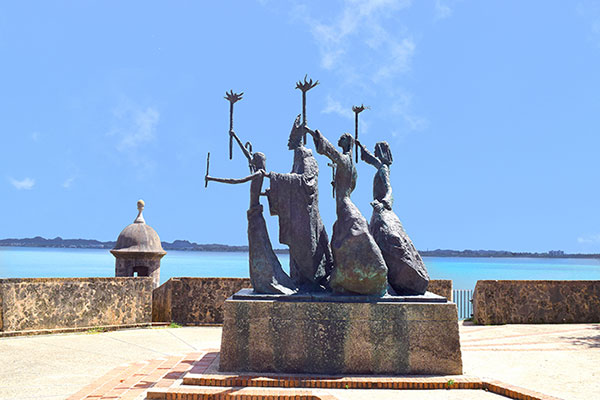
The Plazuela de la Rogativa is a gorgeous shady square overlooking the bay and Puerto Rico’s impressive governor’s mansion, La Fortaleza.
Some of the finest churches in the New World are in the vicinity of Calle San Sebastian and Calle Cristo, including the recently restored San Jose Church, a Gothic rarity and the celestial Catedral de San Juan, a vaulted beauty that is home to the impressive works of religious arts and rare artifacts, as well as the tomb of the island’s first governor, Juan Ponce de Leon, and the mummy of Roman martyr Saint Pio. The Plaza de las Monjas, or Nuns’ Plaza, might be the most deliciously shady spot in all of Puerto Rico, with a bay breeze funneling through tow of the old city’s most gorgeous tree-lined streets, with some of the most gorgeous colonial homes.
If you don’t stay at Hotel El Convento, you’ll want to come by for a tour anyway, if not a meal or a drink at the gorgeous restaurants located in its interior patio and street-level terrace restaurant. It was born in 1651 as a Carmelite convent, and has gone through many lives since then, but today remains a part of the beating heart of the Old San Juan. Its tiled courtyards and terraces are outfitted with gorgeous Spanish furnishings, palm trees, and Caribbean flowering plants, under high-beamed ceilings that are iconic of Old San Juan. It’s really one of the perfect spots to soak up the unique Old San Juan vibe.
In fact the Old City, as it is affectionately known by locals, has wonderful lodging options, including full-scale resort hotels like the Sheraton Old San Juan across from the cruise ship piers. There are also small guest houses and inns with big charm, like Casa Sol Bed and Breakfast, on a beautiful stretch of Calle Sol.
The Plazuela de la Rogativa is a gorgeous shady square overlooking the bay and Puerto Rico’s impressive governor’s mansion, La Fortaleza. Its biggest charm however is a statute of a bishop and three women that recreates a religious procession in 1797 that legend has halted a British attack on San Juan, when sailors mistook the candles of marching nuns for the movement of Spanish reinforcement troops. La Fortaleza, the seat of local government for more than 300 years, is just down the block. The stunner incorporates neoclassical and Arabian elements and has a choice location overlooking San Juan Bay, with great views and breezes in most of the building, and from its many gardens and patios. Tours are available weekdays.
You’ll pass San Juan Gate, which was the main entrance to the city when it was built in 1635, and today leads to the charming stretch of the San Juan bay, with small fishing boats docked just off shore. To the right is a walking path that hugs the base of the massive headland on which El Morro is built and the fortresses ancient walls. The saltwater and sun sprayed path passes dramatic seascapes and patches of sea grapes and tropical vegetation. The mood turns romantic when the El Morro is lit up at night. To the left is Paseo de la Princesa, a bayside promenade between the bay and the massive wall of the ancient city. You’ll see the alluring “Raices” or “Roots,” monument and fountain, which is an impassioned tribute to the Taino, African, and Spanish roots of Puerto Rico and its people, complete with gorgeous gods and goddesses in all their naked glory riding huge sea and land creatures. The beautifully restored La Princesa housing the Puerto Rico Tourism Company Headquarters is also on the promenade, which hosts artisans and sidewalk cafes.
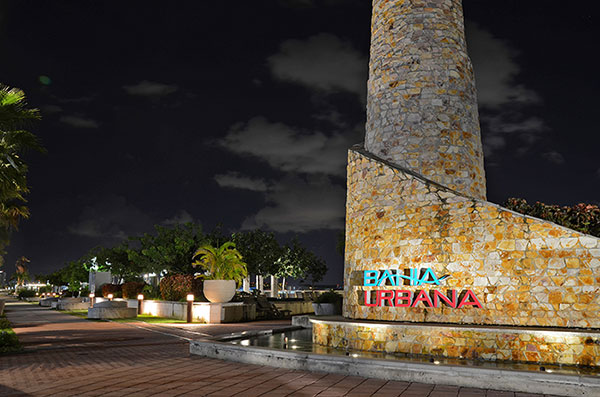
Bahia Urbana, a bayside park on the outskirts of the old city that hosts concerts and special events, as well as ship tours and other tourist adventures.
Cristo and La Fortaleza streets have some of the old city’s smartest boutiques and galleries, but you’ll also want to look to Calle San Francisco, as well as San Jose. There are great cafes, bars, and restaurants throughout the historic sector, but Recinto Sur has become its restaurant row, where you can find classic comida criolla in authentic settings, Spanish food with live flamenco show, inventive contemporary cuisine to live U.S. and Latin Jazz shows and so much more.
Of course one of the joys of the Old City is stumbling around its side streets and cooling off in its gorgeous plazas, which offer shady benches and refreshment stands. Plaza de Colon, at the main entrance to Old San Juan, is centered on a monument of Columbus, but different levels of terraces and fountains and shady corners. Plaza de Las Armas, located at Old San Juan’s heart, is home to the stately San Juan City Hall and Puerto Rico State Department, as well as a number of restaurants and boutiques. The fountain was built to represent the four seasons, and the statue of the gentleman sitting on the bench is Titi Curet, and Old City fixture during his life who was perhaps Puerto Rico’s most prolific writer of salsa music. There are also a number of plazas near the cruise ship ports along the bay.
Artisans often hawk their wares in the plazas and promenades while musicians perform in these public spaces as well. In fact, the city of San Juan has a continuing live music program throughout Old San Juan and the rest of the city that take place on certain nights and weekends throughout the year. The newest addition to the ports area is Bahia Urbana, a bayside park on the outskirts of the old city that hosts concerts and special events, as well as ship tours and other tourist adventures.
Old San Juan is only one-square mile, but it can take days to explore its many charms. When it comes time to say goodbye, you’ll already be plotting a return to, as the Estrada song says, “search for my love, and dream again, in my Old San Juan.”
Hot spots right now
In San Juan, one of the most cosmopolitan cities in the Caribbean, trendy and new restaurants are on nearly every corner. There’s no denying the appeal of hitting up the trendiest spots in town to get those hearts pumping and taste buds delighted.
In San Juan, one of the most cosmopolitan cities in the Caribbean, trendy and new restaurants are on nearly every corner.
There’s no denying the appeal of hitting up the trendiest spots in town to get those hearts pumping and taste buds delighted.
Cocina Abierta in Condado is an interactive open kitchen where culinary ideas are inspired and created. Just like the restaurant’s name suggests, the chef opens his kitchen to share best-kept secrets and knowledge inside this unique Atelier kitchen.
The contemporary and eclectic décor is a mélange of concrete walls, modern light fixtures, custom-made furniture, and repurposed decorative pieces; making it one of the most creative multi-layered spaces in Puerto Rico.
The menu is divided into five acts, allowing you to mix, match and create your ultimate tasting menu. Three wine pairing suggestions accompany each dish.
Don’t skip on the cocktails! They are hand-crafted at the Tiki Bar by expert mixologists who use local ingredients and top-shelf liquors from the world-class collection.
VIVO Beach Club is Puerto Rico’s liveliest oceanfront destination featuring an outdoor beach club and pool, restaurants and bars, and a full-scale brewery called Ocean Lab. It serves comfort food in a casual environment with 9 plasmas to watch sports or just relax and taste the diverse offering of local beers. Guests can experience how beer is produced by taking a tour in the microbrewery.
Situated on one of the island’s top ranked beaches and next to the Isla Verde’s hotel district, VIVO Beach Club has the perfect ingredients for a great Caribbean experience. This hip venue has established itself as the best day and night club in the metropolitan area.
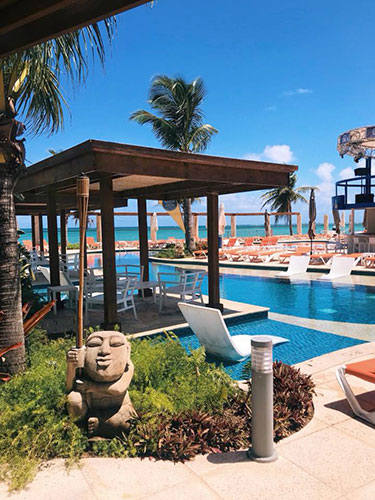
VIVO Beach Club is Puerto Rico’s liveliest oceanfront destination featuring an outdoor beach club and pool, restaurants and bars, and a full-scale brewery called Ocean Lab.
VIVO’s AT&T Arena includes a 9,000 square foot stage that can easily cater to over 30 musicians for a large array of performances, as well as a dance floor and multiple staging areas to accommodate over 5,000 people.
La Placita, the last of the traditional fresh food markets in Puerto Rico before the arrival of supermarkets in the 1970s, is still the heart and soul of Santurce’s hottest nightlife scene.
You can still buy fruits, vegetables, flowers, street food, and fruit shakes during the day. But La Placita is now known for its dozens of restaurants with extensive menu selections, cafes, and nightclubs that surround the traditional food market building.
Especially good on Thursday and Friday nights, the historic market plaza and its surrounding streets host what becomes a street party with people of all ages crowding the square to mingle, talk, drink, listen, and dance to music until the wee hours. The vibe is fun and laid back.
Move over old-school steakhouses, Rare 125º Neighborhood Grill in Miramar has arrived with a modern approach, excellent cuts, sides, and sauces. The restaurant is upscale and trendy without the pretensions of white tablecloths, providing top-notch service.
The lunch options are enticing, with bento box–style steak lunches.
Rare 125° refers to the ideal preparation of the perfect steak, and while this is not a house rule overriding your preferences, it is a commitment to providing the ultimate restaurant experience.
House specialty appetizers are the Beef Tataki and Pork Belly Chicharron. The pork belly is a crowd pleaser of crispy comfort served with whipped black refried beans and a cleansing lemon crème. The Tataki consists of a few slices of the house specialty pastrami rubbed steak, a small mound of dulcet mushroom escabeche, ponzu sauce, and thinly sliced cucumber.
Rare 125° opens for lunch every day from 11:30 a.m. to 3 p.m. and features wraps, burgers, and $15 lunch boxes like the pork tenderloin with vegetable risotto and guava marmalade.
Puerto Rican artisan wholesale bakery Cidrines opened a stylish venue, SOBAO by Los Cidrines, located at the AC Hotel by Marriott in Condado. The name SOBAO originates from Sobao sweet bread, the company’s star product responsible for its success.
Along with the bakery, the venue also includes a restaurant called La Bodeguita, which offers a genuinely spectacular culinary experience.
Upon entering the restaurant, you will see a display of photos and tasteful memorabilia honoring the life of Doña Lidia Miranda and her family, the Cidrines.
The menu at La Bodeguita has a good selection of wines and fresh fish, meat, chicken and pasta and its famous Cocas (similar to pizzas), burgers and tapas. Sobao by Los Cidrines has live music every Thursday, Friday, and Saturday evening.
El Mercado de Paseo Caribe is a modern, upscale food market inside a luxurious waterfront residential complex that brings together a mix of local gourmet restaurants, butcher shops, and other gourmet food boutiques under one roof.
The market has a vibrant feel with its restaurant kitchens and food vendors complimented by the vast, colorful mural created by renowned artist Tom Christopher.
Eateries like Café Alto Grande, Napolitana pizzeria, and the Noodle Merchant rub elbows with well-known local favorites like La Hacienda Meat Market from Miramar, Señor Paleta from Old San Juan, and El Pescador from Santurce, just to name a few.
Along with the impressive array of food options, El Mercado de Paseo Caribe also hosts live entertainment.
Princesa Gastrobar, nestled in a beautiful garden patio surrounded by lush vegetation and trees next to the old La Princesa jail which today houses the offices of the Puerto Rico Tourism Co., sits at the edge of the famous city wall that historically encompassed all of Old City.
The restaurant’s menu features some unique recipes found in an 1800’s Puerto Rican cookbook that blends Spanish and Puerto Rican dishes. These recipes are marked on the menu by a local tree frog called the Coqui.
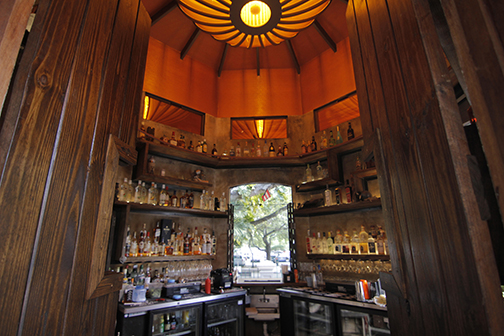
Princesa Gastrobar is nestled in a beautiful garden patio surrounded by lush vegetation and trees next to the old La Princesa jail.
Its specialty is Spanish croquettes, heavenly bites made with chicken and Iberian ham and served over béchamel sauce. Princesa Gastrobar also offers a variety of refreshing rum cocktails and educates its visitors about the history of the Rums of Puerto Rico.
This exclusive venue will make its visitors feel the magic of the story behind its unique location.
Casa Cortes ChocoBar is a restaurant and art gallery in Old San Juan operated by the Cortes family, the biggest chocolate-makers in the entire Caribbean.
They opened this popular and unique venue, voted Best Restaurant in the Caribbean by the readers of USA Today, to share tasty meals and drinks that incorporate the family’s greatest treasure — wickedly delicious chocolate.
The chocolate drinks are out of this world. Get them hot or cold, or with marshmallows. The menu includes specialty drinks like a Choco Martini or Bloody Choco Mary. There are breakfast items, appetizers, sandwiches, entrees, and pastries where chocolate infuses every bite.
On Thursday, Saturday, and Sunday a gallery upstairs offers a glimpse of the family’s private contemporary Caribbean art collection.
Looking for a stiff drink? Then La Casita de Rones in Old San Juan is the right place. This pink-colored lovely venue (once the home of the Puerto Rico Tourism Company Information Center) has two bars, a restaurant, and shop developed by the local government to promote the Rums of Puerto Rico program.
This charming venue in the touristic area of the Old City next to the cruise ship terminals and with views of the San Juan Bay sells and promotes brands like Bacardi, Serralles, Club Caribe, Barrilito, Caray and Trigo and artisanal products by Destileria Cruz, and El Pitorro de Destileria Coqui.
A variety of mouthwatering rum-based signature concoctions, handcrafted and pressed sangrias, and tropical classics, like the famous piña colada, are masterly crafted here to compliment a varied selection of Puerto Rican appetizers, salads, sharing dishes, and entrees.
So check them out. You might just spot some celebrities while you’re there!
Mysterious San Juan
The ancient city tells its own hidden history
The city of San Juan was founded in 1520 after Juan Ponce de Leon decided to relocate from the town of Caparra.
Extreme heat and humidity as well as rebellious Taino Indians made them resettle on the edge of a 2.5 mile size isle overlooking the bay where they had already established a port.
The first dwellers were mostly gold diggers and a number of clergymen. This first settlement to San Juan occurred 100 years before the Mayflower pilgrims arrived at Plymouth.
San Juan developed into a full blown city by the late 18th century and its growth was limited because it was confined within walls built to protect it from invaders
During the 19th century, San Juan was overcrowded and a busy center of commerce, government, military, and cultural life. After the settlement of Americans and the tearing down of inland walls, wealthy and upper middle class families started moving to areas like Condado and Miramar, and the Old City became an impoverished working class town.
A restoration project in the 1970’s and a growing conscience of the city’s charm started attracting middle-class and affluent families. The one constant trait of today’s sanjuaneros is that they are proud of their town and prefer to live in a cultural and historic ambiance rather than in the midst of suburban life full of asphalt and shopping malls.
The walking tour
Bienvenidos participated in a walking tour called San Juan Oculto (Hidden San Juan), a project designed to reveal the architectural wonders and details of the Old City. It was initiated by a group of volunteers, graduate students and teachers from the University of Puerto Rico’s School of Architecture, who teamed up with the San Martin de Porres Foundation. The idea was to develop an educational walking tour as a source of funding- the cost of the tour is what the guest wishes to donate towards the foundation’s work in needy areas of Haiti and the Dominican Republic.
“We want to include tourists, visitors, and student groups who want to learn about the richness, and history present when you walk through Old San Juan,” said Prof. Jorge Lizardi-Pollock, who leads the project along with Pedro Van Marissing of the Foundation.
San Juan Oculto offers three different routes. The first called One City, Many Pasts demonstrates the different historical layers preserved in architectural styles. The second called Architecture, Order and Authority in the Old City explores the structures related to the institutions of power in Spanish colonial times and the third route called San Juan, A Swarm or Everyday Practices focuses on the city as it worked for the common person before electricity and modern aqueducts.
Here come the cabezudos
The century’s old tradition of full head puppets is alive and right in the heart of Puerto Rico’s largest street festival in Old San Juan
“Hurry up, the cabezudos parade is going to start!”
People are scrambling for a great spot to see the action, dads are carrying small children over their arms, and everyone has their phones out ready to take pictures or record. Nobody wants to miss the action.
The narrow street in Old San Juan is packed because the cabezudos, known as bigheads or full head puppets, are about to begin the colorful march that kicks off the traditional Fiestas of San Sebastian Street (the Fiestas), held every year on the third weekend of January. It’s a huge popular celebration that has become the largest festival in all of the Caribbean, equivalent to the island’s very own Mardi Gras.
The crowd jams out to the middle of the street and once the loud countdown reaches zero the city mayor cuts the ribbon of official ceremony, cheers erupt and the Fiestas have begun.
Then the cabezudos begin their march down the street to the beat of traditional plena drums and chants and a feisty marching brass band is immediately joined by hundreds of spectators old and young, who instantly turn from audience to participants in the swinging and joyful trek. Some of the first cabezudos that appear depict historical or folk characters of the Old City, like Doña Fela, the famous mayor of the 40’s and 50’s known for her towering Marge Simpson- style hairdo or Diplo, a popular comedy character from the same era.
Children giggle and point at the cabezudos or try to touch them while others just stare in awe. “The cabezudos parade is one of those things that make me feel like a little boy again,” said a smiling David Padilla, who is a 55 year-old resident of San Juan who never misses the event.
Next come the comparsa or marching crew of the Agua Sol y Sereno theater company, with an explosion of energy and circus-like ambiance. More than 40 finely crafted cabezudos and giant puppets among a colorfully clad of stilt walkers manage to dance to the tropical rhythm of plena.
“I remember as a kid I was so excited to be in the cabezudos parade!” said Maria Muñoz, a 20 year-old college student from the west coast of Puerto Rico. It also made me so curious that I would bombard my parents with questions about who those characters were and their history. It’s a very exciting event and when I have kids I will definitely bring them to the parade and the Fiestas.”
Medieval roots
The tradition of the cabezudos began in Spain around the 12th century specifically in festivities in northern Basque Country, and in the provinces (then kingdoms) of Aragon and Valencia, among others. According to Spanish historian Javier Aparicio, the tradition became widespread as the catholic kings conquered Spain again from Islamic rule in the late 15th century. The reason, according to Aparicio, was that Islamic law prohibited depictions of saints and even ordinary people so when the Catholics regained power these restrictions were eliminated and the use of cabezudos and giant puppets proliferated through most regions.
In Puerto Rico it all started in the mid 1950’s when the parish priest in Old San Juan’s Church of San Jose organized a religious procession mixed with music and festivities to honor Saint Sebastian, the patron of the street where the temple was built and situated in 1511.
The priest, Juan Manuel Madrazo, a native of the northern Basque Country of Spain, started the festivity to help finance the repairs of the San Jose church, the second oldest Christian temple in the Americas, as well as a school he was starting in Barrio La Perla, which lies just outside the ancient city walls.
Father Madrazo went to Spain for vacation and came back with two giant puppets, known also as gigantones and a couple of cabezudos. The Basque Country of Spain is one of the regions where this tradition has been in place for centuries.
The cabezudos brought by father Madrazo were called sanchos, after the famous literary character of Don Quijote’s partner and a symbol of the ordinary man of the village. The two giant puppets depicted the 16th century Catholic kings of Spain, Fernando and Isabel, precisely the ones who conquered Spain for the second time from the Islamic rulers and sent Christopher Columbus off to conquer the New World.
So these colorful puppets of enormous heads designed to stand out in a crowd became the heart and soul of the Fiestas, kicking off the festivities with a parade along the street that featured the cabezudos along with marching bands. The event was celebrated during the 1950’s and it was a great neighborhood block party for residents of Old San Juan but unknown to the rest of Puerto Rico. Read more
Art styles from realism to abstract painting
Puerto Rico is an island where its creative talent and plastic arts overflow, and painting is no exception. The work of dozens of Puerto Rican artists can be appreciated at key museums and galleries in Puerto Rico, the U.S. mainland, Latin America, and Europe.
Four local stars share their style, techniques and vision
Puerto Rico is an island where its creative talent and plastic arts overflow, and painting is no exception. The work of dozens of Puerto Rican artists can be appreciated at key museums and galleries in Puerto Rico, the U.S. mainland, Latin America, and Europe.
From Jose Campeche – the forefather of Puerto Rican artists to the contemporaries; local artists have cultivated a great variety of styles that go from realism to figurative to abstract.
BIENVENIDOS interviewed four Puerto Rican internationally renowned artists who reflect some of the aforementioned tendencies and exemplify the quality of art developed on the island.

